|
















|
|
|
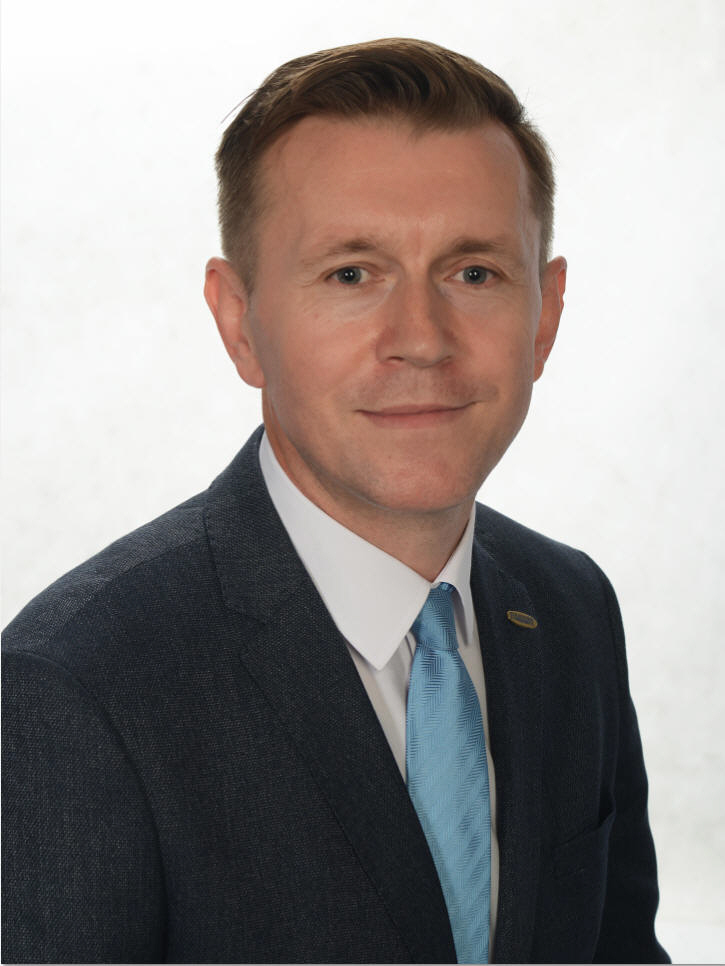
Prof. Dr. Elvis Ahmetović
Dopisni član Akademije nauka i umjetnosti Bosne i
Hercegovine
Predsjednik Kantonalnog savjeta za nauku i tehnologiju
 Univerzitet u Tuzli, Tehnološki fakultet
Univerzitet u Tuzli, Tehnološki fakultet
Katedra za hemijsko inženjerstvo
Urfeta
Vejzagića 8, 75000 Tuzla
Bosna i Hercegovina


|
Kratka biografija
Zaposlen sam
kao redovni profesor za užu naučnu oblast hemijsko
inženjerstvo na
Tehnološkom fakultetu
Univerziteta u Tuzli od 2017. godine. Na
istoj instituciji diplomirao sam 1998., magistrirao
2002., a doktorirao 2005. godine. Nakon zaposlenja na
Tehnološkom fakultetu Univerziteta u Tuzli u zvanju
asistenta za užu naučnu oblast hemijsko inženjerstvo
(1999-2004) bio sam kasnije biran na istoj instituciji
u zvanje višeg asistenta (2004-2006), docenta
(2006-2011), vanrednog profesora (2011-2017) i redovnog
profesora (2017). U akademskoj 2007/2008. godini i
dijelom u 2009. godini bio sam prodekan za nastavu i
studentska pitanja na Tehnološkom fakultetu Univerziteta
u Tuzli.
U 2008/2009. godini bio sam
Fulbright stipendista
na
Carnegie Mellon University,
Department of Chemical Engineering,
u Pittsburghu, PA (SAD). U 2011/2012. godini nagrađen
sam od strane JoinEU SEE programa za realizaciju
istraživanja na
Univerzi v Mariboru,
Fakulteti za kemijo in kemijsko tehnologijo
(Slovenija). Također, u 2011. i 2019. godini nagrađen
sam od strane DAAD programa i 2012. godine EM2-STEM
programa za realizaciju istraživanja na
Institute for Applied Material
Flow Management (IfaS) (Germany),
University of Bremen (Laboratory
of Process Systems Engineering) i
Lappeenranta University of
Technology (Finland).
Kao gostujući
profesor bio sam zaposlen 2014/2015. godine na
Univerzi v Mariboru u
okviru projekta "Internationalization - A Pillar of
Development of the University of Maribor". Posjetio sam
istu instituciju 2018. godine u sklopu projekta
"Involvement of visiting foreign experts and university
teachers in the pedagogical process as a pillar of
quality development process of internationalization of
the University of Maribor" i realizovao sam nastavne
aktivnosti u hemijskom inženjerstvu na Fakulteti za
kemijo in kemijsko tehnologijo. U okviru CEEPUS projekta
održao sam u 2013. godini predavanja na Univerzi v
Mariboru (Slovenija) i u 2019. godini na Sveučilištu u
Zagrebu (Hrvatska) i Univerzitetu Sv. Kiril i Metodij (Makedonija). Učestvovao sam u
Erasmus+ programu Staff mobility for teaching and
training i održao sam predavanja na
Lappeenranta University of
Technology (Finska) u 2016 i
Pamukkale University
(Turska) u 2018., 2019. i 2021. godini.
Moji
istraživački interesi u hemijskom inženjerstvu su
povezani sa analizom, sintezom i dizajniranjem hemijskih
procesa, procesnom integracijom, integracijom vode i
energije, održivim razvojem, zelenim inženjerstvom,
matematičkim programiranjem i optimizacijom procesa.
Autor sam
sedam knjiga, tri poglavlja knjiga i preko
100 radova
objavljenih u časopisima i zbornicima konferencijama i
predstavljenih na konferencijama održanim u
Evropi, Americi i Kini.
Najveći impakt faktor
časopisa u kome su publicirani rezultati mojih
istraživanja u saradnji sa drugim kolegama je oko
9.
Naši istraživački radovi su citirani više od
1200 puta.
Moj h-indeks je 17 i i10-indeks je 22 (Google
scholar). U 2012. godini, dobili smo
nagradu za najbolji rad
na SDEWES konferenciji. Naš
istraživački rad
publiciran u AIChE časopisu je jedan od najviše
citiranih radova od 2011. godine. U 2021. godini,
dobitnik sam
Federalne nagrade za nauku
koja mi je dodijeljena od Vlade Federacije Bosne i
Hercegovine za popularizaciju i promociju nauke i za
doprinos u širenju spoznaja o nauci kroz njihovo
publikovnje, prezentiranje i promoviranje na domaćem i
međunarodnom planu. Također, u 2022. godini,
dobitnik sam
Federalne godišnje nagrade za nauku
koja mi je dodijeljena od Vlade Federacije Bosne i
Hercegovine za značajno naučno dostignuće u
području Tehničke nauke kroz niz naučnih radova koji
čine cjelinu i doprinose proširenju postojećih naučnih
spoznaja u oblasti hemijskog inženjerstva, sinteze i
optimizacije toplinsko-integriranih mreža vode i
integracije vode i energije u tehnološkim procesima.
Recenzent sam
za 20 međunarodnih časopisa. Član sam naučnih
savjetodavnih i naučnih odbora nekoliko međunarodnih
konferencija kao što su
European Symposium on
Computer-Aided Process Engineering
(ESCAPE),
Conference on Sustainable
Development of Energy, Water and Environment Systems
(SDEWES),
International Conference on
Sustainable Energy & Environmental Protection (SEEP),
South East European Conference on
Sustainable Development of Energy, Water and Environment
Systems (SEE
SDEWES),
Croatian Conference of Chemists
and Chemical Engineers. Član sam
American Institute of Chemical
Engineers (AIChE)
od 2009,
Hrvatskog društva hemijskih
inženjera od 2002. godine i član Sekcije za
energiju
Energy and Resources Efficiency in
the Chemical and Process Industry
od 2019, uvedene od
strane European Federation of
Chemical Engineering
(EFCE).
Također, bio sam član Senata Univerziteta u Tuzli od 2017-2021.
godine. Učestvujem u upravnom odboru četiri Cost
akcije kao član ispred Bosne i
Hercegovine. Bio sam gostujući urednik
istraživačke teme pod nazivom "Combined Water and Heat
Integration in the Process Industries" za časopis
Frontiers in
Chemical Engineering. U
2022. godini izabran sam za Predsjednika Kantonalnog
savjeta za nauku i tehnologiju u Tuzlanskomkantonu i za Dopisnog člana
Akademije nauka i umjetnosti Bosne
i Hercegovine (ANUBiH) u Odjeljenju tehničkih
nauka.
Bio sam
pozvani predavač i učesnik međunarodnih konferencija
održanih u Evropi, Sjedinjenim Američkim Državama i Kini,
kao i voditelj i/ili učesnik bilateralnih i međunarodnih
istraživačkih projekata. Kao voditelj Erasmus+
projekta na Univerzitetu u Tuzli pod nazivom "INTERnationalization
at Home: Embedding Approaches and Structures to Foster
Internationalization at Western BAlkans" osnovao sam "INTERBA
laboratoriju-Računarski centar" na matičnoj ustanovi.
Trenutno sam koordinator
tri međunarodna projekta
na Univerzitetu u Tuzli:
CEEPUS
projekta "Chemistry and Chemical Engineering", Erasmus+
projekta
"Sustainable project management in Balkan Higher
Education Institutions" i bilateralnog istraživačkog projekta
"Synthesis of evaporation systems using mathematical
programming".
Klikom na
sljedeće slike možete pronaći više detalja o mojim
istraživačkim radovima u časopisima, zbornicima
konferencija i prezentiranim na konferencijama. Također,
više informacija o rezultatima istraživanja možete
pronaći na ovoj stranici, kao i
ovdje.
      
|
|
|
 |
Strateški ciljevi |
|
|
Moji strateški
ciljevi na Univerzitetu u Tuzli su poboljšati kvalitet
istraživanja i edukacije, uspostaviti saradnju sa različitim
univerzitetima i istraživačkim grupama i učestvovati sa
njima u različitim projektima, poboljšati
naučno-istraživačku i naučno-nastavnu infrastrukturu,
povećati vidljivost rezultata istraživanja i međunarodnu
vidljivost Tehnološkog fakulteta, Univerziteta u Tuzli i
Bosne i Hercegovine. Internacionalizacija i saradnja sa
kolegama širom svijeta igraju veoma važnu ulogu u
realizaciji navedenih ciljeva.
|
|
|
 |
Učešće u istraživačkim i edukacijskim projekima i
mobilnostima |
|
|
Za ostvarivanje
ciljeva učestvovao sam u različitim naučno-istraživačkim i
edukacijskim projektima i programima, mobilnostima i
treninzima. Klikom na slijedeće slike mogu se pronaći
detaljnije informacije o različitim programima i
organizacijama koje su finansirale i podržale moje prethodni
i trenutni istraživački i nastavni rad.
|
|
|
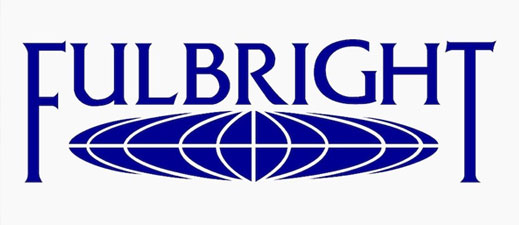 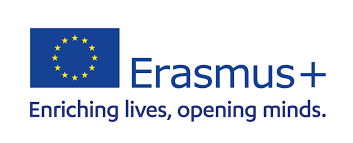

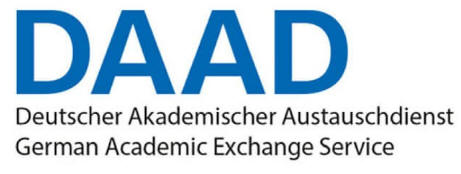

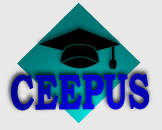
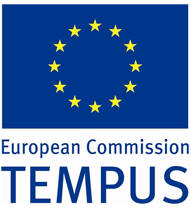 |
|
|
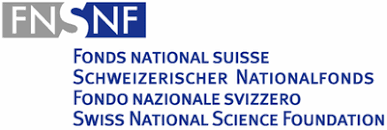

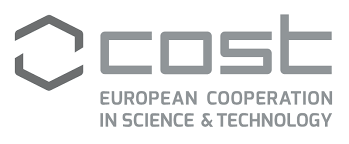
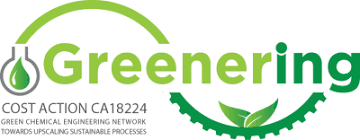
 |
|
|
 |
Mreže za istraživanje i saradnju
|
|
|
Uspostavio sam
mreže za istraživanje i saradnju sa kolegama sa različitih
univerziteta iz Amerike, Slovenije, Švicarske, Austrije,
Španije, Njemačke, Turske, Finske itd. Naša saradnja se
bazira na učešću i saradnji u naučno-istraživačkim i
edukacijskim projektima, izmjeni istraživača i studenata i
pisanju naučnih radova i poglavlja knjiga. Mi smo već
uspješno završili nekoliko projekata, mobilnosti i napisali
mnoge radove koji su publicirani u časopisima sa visokim
impakt faktorima i predstavljeni na naučnim konferencijama
širom svijeta. Detaljnije informacije o nekim kolegama koji
su sa kojima sam imao veoma uspješnu saradnju su date ispod
a detalji o mom istraživačkom fokusu, postojećim i završenim
naučno-istraživačkim projektima se mogu naći
ovdje.
|
|
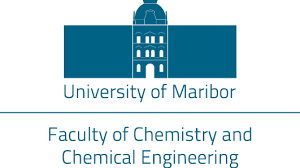 |
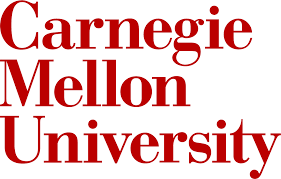 |
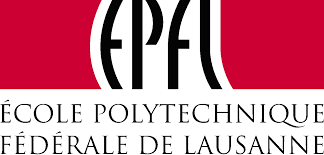 |
|
|
|
|
Prof. Zdravko Kravanja |
Prof. Ignacio E. Grossmann |
Prof. François Maréchal
|
|
|
|
|
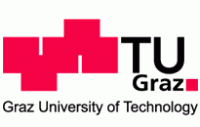 |
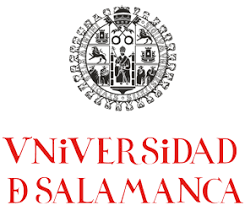 |

 |
|
|
|
Prof. Stefan Radl |
Prof. Mariano Martín |
Prof. Edwin Zondervan |
|
|
|
|
 |
Odabrani radovi publicirani u časopisima i zbornicima radova
i prezentirani na konferencijama u zadnjih 12 godina |
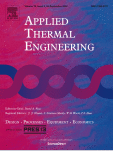 |
Ibrić, N., Ahmetović, E.,
Kravanja, Z., & Gundersen, T. (2024). Synthesis
of heat-integrated water networks: Integration of heat pumps.
Applied Thermal Engineering, 254, 123760.
DOI:
https://doi.org/10.1016/j.applthermaleng.2024.123760
A typical heat-integrated water network (HIWN) synthesis
problem aims to minimise freshwater and utility consumption
while establishing trade-offs between operating and
investment costs by exploring different water and heat
integration opportunities. Heat integration between hot and
cold water streams is performed to save external heating and
cooling utilities required to achieve the target
temperatures of these streams. This paper proposes a
mathematical programming approach to integrate
water-to-water heat pumps into the HIWNs. A simple cascade
heat pump system with isobutane as a natural working fluid
enables a larger temperature lift between the heat pump
source and the sink. The objective function of the proposed
mixed-integer nonlinear programming (MINLP) model is to
minimise the total annualised cost (TAC). The TAC includes
operating costs for freshwater, heating/cooling utilities,
electricity, and investment in heat exchangers and heat
pumps. A sensitivity analysis is performed to evaluate the
economic feasibility of the system by varying the
heating/electricity cost ratio and depreciation period for
the capital investment. The results show that additional
utility savings can be obtained by integrating heat pumps
into the HIWNs. For threshold problems, a heat pump is
feasible for heating/electricity price ratios from 1.175,
and heating utility is replaced by electricity for a 1:1
ratio. However, for pinched problems, the feasibility of the
heat pump is shifted to lower heating/electricity price
ratios, from 0.3 to 0.5, depending on the annualisation
factor for the investment.
|
 |
Ibrić, N., Ahmetović, E.,
Kravanja, Z., & Gundersen, T. (2024).
Synthesis of heat-integrated water
networks considering detailed heat exchanger design.
Applied Thermal Engineering, 254, 123833.
DOI:
https://doi.org/10.1016/j.applthermaleng.2024.123833
This paper introduces a mathematical programming approach
for synthesising heat-integrated water networks (HIWNs) with
a detailed heat exchanger design. A common assumption of
constant heat capacities of water streams is relaxed. The
specific heat capacity of water is now considered as a
nonlinear function of temperature to avoid errors in
calculating energy balances. In addition, most previous
works have assumed constant individual heat transfer
coefficients for water streams and utilities when estimating
heat transfer areas. This assumption can lead to significant
over- or under-estimation of heat transfer areas. In this
research, individual and overall heat transfer coefficients
for heat exchangers are calculated based on the detailed
design of plate heat exchangers for heat recovery. The
objective function of the proposed mixed integer nonlinear
programming (MINLP) model is to minimise the total
annualised cost (TAC). The TAC includes operating costs for
freshwater and utilities, pumping costs for overcoming
pressure drops in heat exchangers, and investment costs for
heat exchangers. Three examples are solved in this work to
verify the proposed model.
|
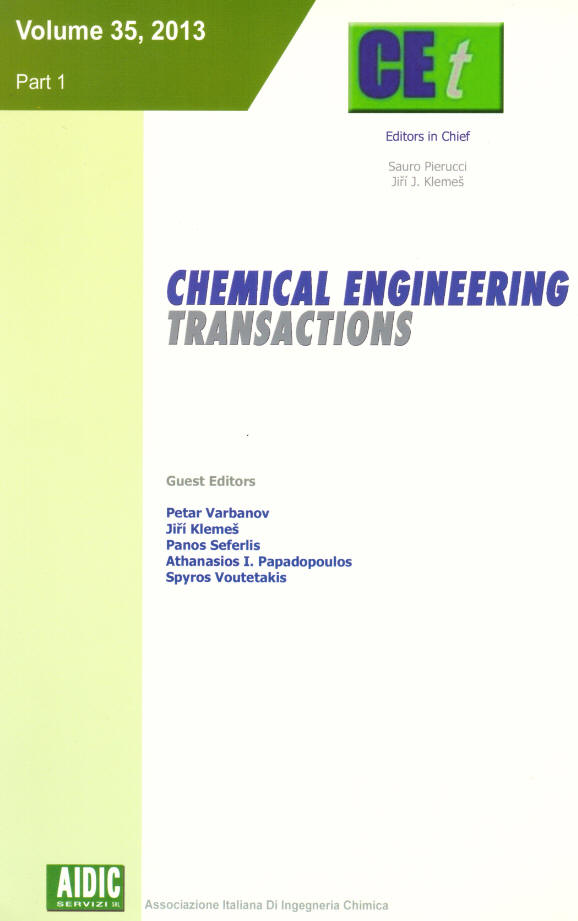 |
Ahmetović,
E., Ibrić, N., Nemet, A., Kravanja, Z., Grossmann,
I. E. (2022).
Recent Progress and Future Directions in the
Synthesis of Heat-Integrated Water Networks.
Chemical Engineering Transactions, 94, 625-630.
DOI:
https://doi.org/10.3303/CET2294104
The synthesis of Heat-Integrated Water
Networks (HIWNs) has been a very active research area over
the last twenty-five years. Systematic methods based on
Pinch Analysis (PA), Mathematical Programming (MP) and their
combinations (PA-MP) have been developed and applied to HIWN
case studies with varying levels of complexity. There have
also been some attempts to apply alternative optimisation
tools for the synthesis of HIWNs, such as Process Graph
(P-Graph). However, most recent works have applied MP
primarily to solve large-scale problems, including single
and multiple freshwater sources and single and multiple
contaminants in water streams. The synthesis of combined
Water-Using Networks (WUNs), Wastewater Treatment Networks (WTNs)
and Heat Exchanger Networks (HENs) has proven to be a
challenging task for researchers to find a global solution
or even good local and practical solutions. In a previous
work, a comprehensive review of papers in this field was
given for the period from 1997 to 2015 (Ahmetovic et al.,
2015). The goal of this work is to provide a review of
recent progress in the synthesis of HIWNs after this period,
discuss case studies solved in the literature, identify
research gaps and provide suggestions that can be a driving
force for future research and improvements in this field.
|
 |
Nemet, A.,
Ibrić, N., Bogataj, M., Ahmetović, E., Kravanja, Z.
(2022).
Simultaneous Synthesis of Heat-Integrated Water
Network with the Two-Step Approach.
Chemical Engineering Transactions, 94, 1351-1356.
DOI:
https://doi.org/10.3303/CET2294225
Determining the optimal design of a Heat-Integrated Water
Network (HIWN) is a complex task due to the existence of
highly nonlinear relationships when considering
concentrations, mass and heat balances. Due to that
complexity, the solution is usually obtained by a sequential
approach. In this approach, the minimum fresh water and
utility consumption is firstly determined. Then, the exact
design of the HIWN is synthesised with the fixed minimum
fresh water and utility consumption. Another way to obtain
the HIWN design is by using a simultaneous approach.
However, such a model can be highly nonlinear requiring the
application of a special solution strategy. In this work, a
two-step approach was developed and applied. In the first
step, a targeting Mixed-Integer Nonlinear Programming (MINLP)
model with a high share of linearity was applied estimating
also the HEN investment. In this way, the solutions are
steered towards an optimal solution by establishing
appropriate trade-offs between investment and operating
costs during the targeting step. Based on the results of the
first step, a reduced superstructure and MINLP model are
used in the second design step to select promising matches
for heat exchangers. By excluding the non-promising matches
that previously led to an unnecessary increase in the
complexity of the synthesis model, the second step MINLP
model performs much better and enables synthesizing the
entire HIWN simultaneously. The aim of this work was to
verify whether the two-step approach is suitable for solving
the HIWN problem. The obtained solution for case study
considered in this work indicated the applicability of the
proposed approach, which will be also applied in further
research on large-scale HIWN problems.
|
 |
Ibrić, N.,
Ahmetović, E., Nemet, A., Kravanja, Z., Grossmann,
I. E. (2022).
Synthesis of Heat-Integrated Water Networks Using a
Modified Heat Exchanger Network Superstructure.
Energies 15(9), 3158.
DOI:
https://doi.org/10.3390/en15093158
This work presents the synthesis of heat-integrated water
networks (HIWNs) by using mathematical programming. A new
superstructure is synthesised by combining a water network
and a modified heat exchanger network. Based on the proposed
superstructure, a mixed-integer nonlinear programming (MINLP)
model is developed. The model is solved by using a one-step
solution strategy enabling different initialisations and the
generation of multiple solutions, from which the best one is
chosen. The results show that the proposed model can be
effectively used for solving HIWN problems of different
complexities, including large-scale problems.
|
 |
Ahmetović, E, Grossmann, I.E,
Kravanja Z, Maréchal F., Klemeš, J., Savulescu, L.,
Dong H. (2022).
Editorial: Combined water and heat integration in
the process industries.
Frontiers in Chemical Engineering, 4:1012754.
DOI: https://doi.org/10.3389/fceng.2022.1012754
|
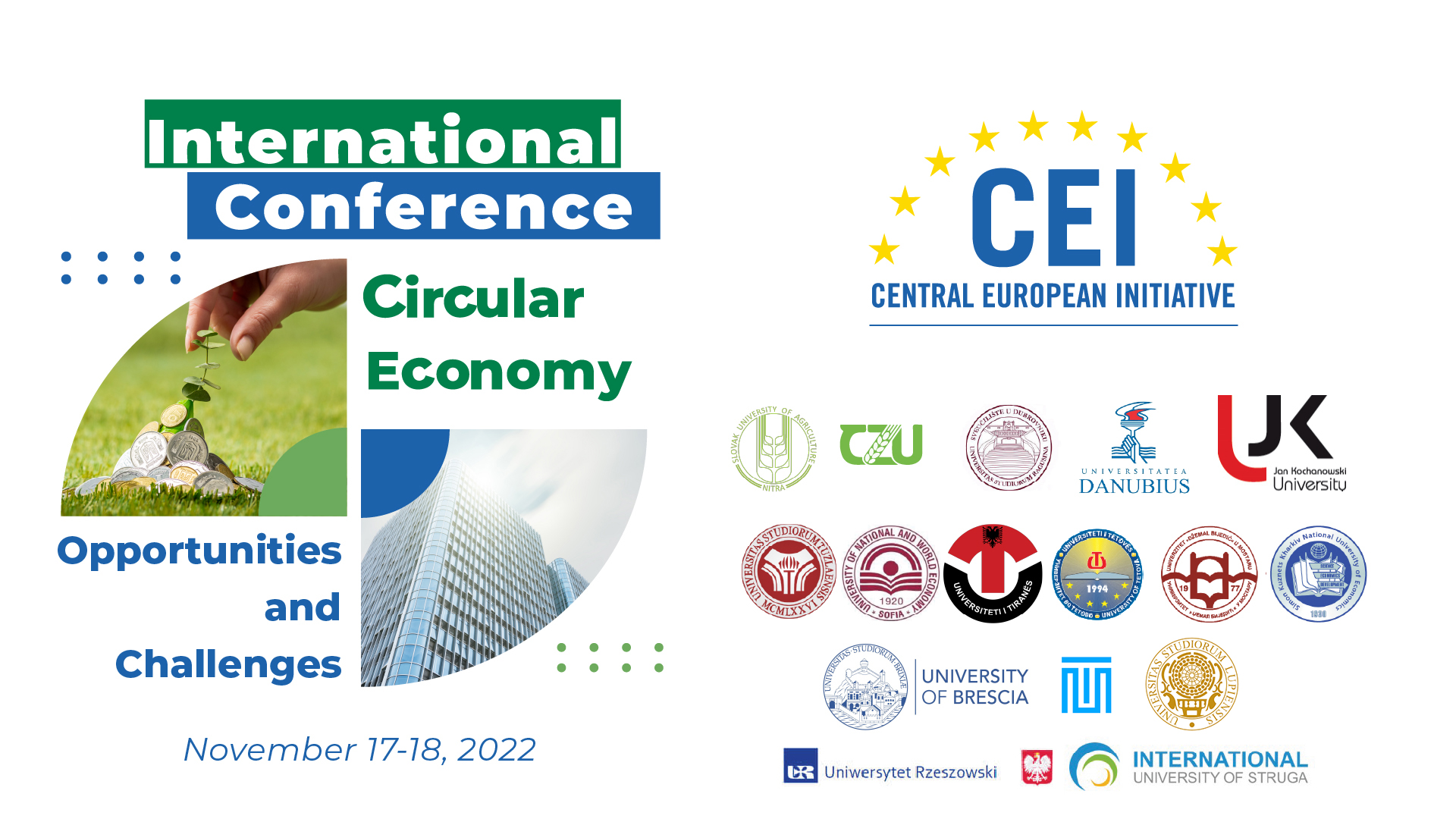 |
Process industries consume
large quantities of freshwater and generate various
wastewater streams discharged into the environment.
Wastewater streams are usually sent to wastewater treatment
plants to recover valuable resources (e.g., water,
heat/energy, salts, chemicals, and
metals) from wastewater which can be reused for various
purposes. Consequently, the consumption of natural resources
taken from the environment and used in the process
industries can be minimized, including also waste generated
in the process industries and discharged into the
environment. Accordingly, concepts and technological,
sustainable, and profitable design solutions are needed to
address this issue. The main focus of this paper is to
highlight the importance of systematic methods in solving
this very challenging and complex task and present design
solutions for some illustrative case studies.
|
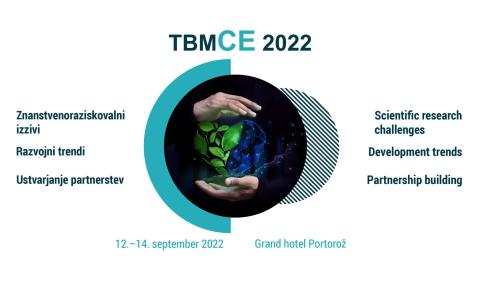 |
Ahmetović, E., Ibrić,
N., Nemet, A., Kravanja, Z., Grossmann, I. E.
(2022).
Importance of Water and Energy Integration in
Circular Economy Approach.
The 5th International Conference on Technologies &
Business Models for Circular Economy, September
12-14, 2022, Portorož, Slovenia. Plenary Lecture.
Global
water and energy consumption in various sectors (domestic,
agricultural and industrial) will increase in the future due
to population and economic growth. Accordingly, there is an
urgent need to develop combined water and energy efficient
solutions to address this issue in all sectors in line with
the circular economy
principles. Recent works provided definitions, strategies,
and challenges for the circular economy of water (Morseletto
et al., 2022), a circular economy framework for resources
and waste management in the water and wastewater sector (Smol
et al., 2020), and a mathematical approach for the synthesis
of a wastewater treatment plant using the concept of
circular economy (Ho et al., 2022). Water and energy are
important resources used in large quantities in the process
industries for various purposes (e.g., washing, cooling, and
heating). Their consumption should be minimised in
manufacturing processes to reduce operating costs and
provide profitable and sustainable solutions. Wastewater
generated by these processes should not be considered as
waste because it is a valuable resource for freshwater,
energy, and materials. Reusing, regenerating, and recycling
wastewater can provide economic and environmental benefits
such as reducing freshwater and energy consumption and
greenhouse gas emissions and recovering valuable materials
from wastewater. To achieve these goals, systematic
approaches for water and energy integration should be
applied to design optimal water and energy network
solutions. In the last several decades, pinch analysis,
mathematical programming and hybrid approaches have been
successfully applied to design combined water and energy
networks with optimal water and energy consumption (Ahmetović
et al., 2015, Budak Duhbacı et al., 2021). The main focus of
this work is to show the importance of water and energy
integration and applications of systematic methods in a
circular economy approach for optimising water and energy
reuse in manufacturing processes and highlight possible
future directions in this research field.
|
|
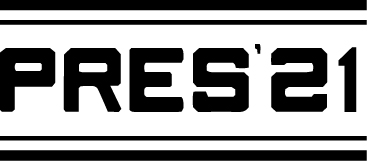 |
Nemet, A., Ibrić,
N., Ahmetović, E., Kravanja, Z. (2021). Heat-Integrated
Water Networks Synthesis with Improved Trade-offs between
operating and investment costs by TransHEN model. The 24th
Conference on Process Integration for Energy Saving and
Pollution Reduction - PRES'21, October 31 - November 3,
2021, Brno, Czech Republic, Hybrid-Confererence (Face2Face +
On-line).
Achieving an
optimal design of heat-integrated water network (HIWN) is a
complex task due to highly nonlinear relationships when
considering concentration and heat balances. Therefore, the
solution is usually obtained by a sequential approach. In
this approach, the minimum fresh water and utility
consumption is achieved first, and then the exact design of
HIWN is synthesised with the fixed minimum fresh water and
utility consumption. This sequential approach can also have
intermediate steps as demonstrated in the literature. The
previous method is an excellent approach, when the studied
case has low investments compared to operating costs.
However, if the investments have a significant impact on the
trade-off between investments and operating costs, the
presented approach may lead to poor local solutions. In this
study a TransHEN model (Nemet et al., 2019) is incorporated
into the second step of the sequential approach for HIWN
synthesis (Ibrić et al, 2016). Through this incorporation,
the investment for heat exchanger network (HEN) is
considered via a mixed-integer linear programming (MILP)
model to select promising matches for heat exchangers. In
this way the solutions are directed towards a more optimal
solution by allowing appropriate trade-offs between
investment and operating costs. Moreover, by excluding the
non-promising matches that previously led to an unnecessary
increase in the complexity of the MINLP model, the MINLP
model preforms much better. The improved optimal solutions
are obtained by the proposed approach used in this study.
|
|
 |
Ibrić, N.,
Ahmetović, E., Kravanja, Z., Grossmann, I. E. (2021).
Synthesis of heat-integrated water networks: Case study
sensitivity analysis. The 24th Conference on Process
Integration for Energy Saving and Pollution Reduction -
PRES'21, October 31 - November 3, 2021, Brno, Czech
Republic, Hybrid-Confererence (Face2Face + On-line).
This work
addresses the synthesis of heat-integrated water networks (HIWNs)
by using a superstructure optimisation approach. A recently
developed mixed-integer nonlinear programming (MINLP) model
and an iterative solution strategy are applied in this work
to a case study of HIWN. The objective function of the MINLP
model is to minimise the network total annualised cost (TAC)
comprising operating and investment costs. As there are
trade-offs between operating and investment costs, good
solutions can be obtained if the TAC is minimised by
simultaneously exploring all water and heat integration
opportunities within the network. A case study sensitivity
analysis is performed analysing the impact of freshwater and
utility costs, as well as investment costs, on the network
design and key performance indicators. This work also
demonstrates the importance of the targeting step of the
proposed solution strategy for selecting promising matches
used in the design step of the HIWN by the MINLP model.
|
|
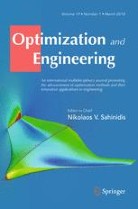 |
This paper
presents a state-of-the-art overview of water and energy
optimisation methods with applications to Kraft pulp mills.
The main conclusions are highlighted, and several research
gaps are identified and proposed for future research. Kraft
processes have the potential to be adapted to biorefineries
for producing biofuels and other high-value products from
wood biomass. Biorefineries enable opportunities to increase
the revenue of the process, reduce fossil fuels usage and
greenhouse gas emissions. However, to ensure an effective
Kraft process transformation, the existing mill
infrastructure needs to be consolidated. In this sense, the
water system, the heat exchanger network and the utility
system should all be optimised together. A series of
systematic methods (process integration-conceptual and
mathematical programming) have been identified in the
literature, along with the results of several case studies
that reduce water and energy consumption in Kraft processes.
Initial studies in this field considered and solved separate
water and energy integration problems, but recent works have
been focused on the development of methods for combined
water and energy integration and their application to
various processes. Typical savings lead to freshwater
consumption decreases between 20 and 80% and energy
consumption reductions between 15 and 40%.
|
|
 |
This work presents
a simultaneous mixed-integer nonlinear programming (MINLP)
optimization model and an efficient iterative solution
strategy that can be successfully applied to various
heat-integrated water networks (HIWNs), including
large-scale problems with a large number of water streams.
These problems are highly nonlinear, non-convex and
combinatorial. To circumvent such difficulties, including
network complexity as well as identifying the roles of water
streams in the heat exchanger network (HEN) whether they are
hot or cold, a modified convex hull formulation proposed by
Ahmetović and Kravanja [1] is applied. The overall model
combines the water network (WN), wastewater treatment
network (WTN), heat integration (HI), and heat exchanger
network synthesis (HENS) models. This model is iteratively
solved in three steps including targeting and design steps.
The proposed model and solution strategy are tested on
large-scale problems. To the best of our knowledge, the
results obtained for all the problems in this paper are
better than those reported in the current literature.
|
|
 |
This paper
addresses the synthesis of combined evaporation-crystallisation
systems for the recovery of valuable materials from waste in
line with sustainable development and circular economy
concepts. The primary focus of this work is the utilisation
of distiller waste from the Solvay process, which comprises
sodium chloride (NaCl), calcium chloride ( CaCl2)
and water (H2O).
The superstructure optimisation of a heat and power
integrated evaporation-crystallisation system is performed
by solving the proposed Mixed-Integer Nonlinear Programming
(MINLP) model. The superstructure extends our recent
research to include the partial crystallisation of NaCl and
the production of concentrated CaCl2
solution. To address the considered case study, a
thermodynamic model for multi-component electrolytic systems
is developed. A three-step solution strategy is proposed to
circumvent a problem with added nonlinearities and to solve
the overall MINLP model. The optimal design of a
heat-integrated evaporation-crystallisation system with
mechanical vapour compression is presented and the main
conclusions are highlighted.
|
|
 |
Ibrić, N.,
Ahmetović, E., Kravanja, Z. (2020). Optimisation of
evaporation-crystallisation system for the recovery of
sodium chloride from the Solvay process waste stream. The
3rd International Conference on Technologies & Business
Models for Circular Economy (TBMCE), December 15th 2020,
Maribor, Slovenia.
Sodium chloride
can be recovered from distiller waste stream
(NaCl-CaCl2-H2O) in Solvay process by partial evaporation of
water and the remaining concentrated calcium chloride
solution can be sold on market or further processed. This
work presents the mathematical programming approach for the
optimisation of evaporation-crystallisation system for the
recovery of NaCl from distiller waste stream. The
superstructure proposed includes options for the
concentration of waste stream up to saturation point and
crystallisation of NaCl with the heat and power integration
options enabling energy recovery. A mixed integer nonlinear
programming (MINLP) model is proposed with the objective
function to minimise total annualised cost. The optimal
design is presented and includes mechanical vapour
recompression system with the feed stream preheating
options. Main conclusions and further research directions
are highlighted.
|
|
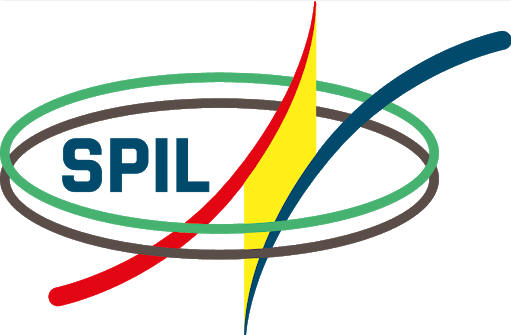 |
Ahmetović, E.,
Ibrić, N., Kravanja, Z., Ignacio E. Grossmann (2020).
A
Mathematical Programming Approach for Water and Energy Optimisation: A Case Study of a Kraft Pulp Mill.
The 4th Sustainable Process Integration
Laboratory Scientific Conference - Energy, Water, Emission &
Waste in Industry and Cities, November 18-20, 2020,
SPIL2020.0226.
Water and energy
optimisation in the Kraft pulp and paper mills is very
important from the economic and environmental aspects. The
interactions between water and energy consumption in these
processes should be systematically explored to minimise the
overall consumption of utilities. Many previous studies were
focused on solving separate optimisation of water and energy
integration, and separate design of water and heat exchanger
networks. However, recent studies applied different
approaches for combined water and energy integration, and
the design of a combined water and heat exchanger network.
This work will present a mathematical programming approach
applied for the optimisation of combined water and energy
integration, and the design of a combined water and heat
exchanger network in a Kraft pulp mill. The base case of
this process will be presented and solutions obtained by
applying a mathematical programming approach based on
superstructure optimisation. A comparison of solutions will
be performed from the various aspects e.g. freshwater and
utility consumption, operating and investment cost, and
network complexity. On the basis of presented solutions and
their comparison, the main conclusions will be highlighted.
Video presentation
of this work is available on my YouTube channel.

|
|
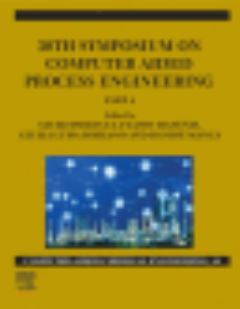
ESCAPE30
 |
The fluctuating production of renewable energy constraints
the operation of Power-to-X processes such that steady-state
conditions are unattainable without energy storage. It seems
eminent to establish operation strategies considering
significant disturbances along the process and to determine
those scenarios where the operation becomes unfeasible. In
this work, an industrial methanol Lurgi-type reactor,
embedded in a Power-to-Jet process (Figure 1), is evaluated
under fluctuating feed conditions. The simulated scenarios
consist of step functions up to 20 % (w/w) increments in the
feed flowrate as consequence of the fluctuating power input
on the electrolysis stage. A one-dimensional dynamic model
for a multi-tubular fixed bed reactor is implemented,
considering both the gas and catalyst phase. The
mathematical model is solved numerically using orthogonal
collocation at the spatial domain and backward differences
at the time domain. The system shows rapid response to
disturbances, reaching steady state conditions in 1.5
minutes. Furthermore, it is evidenced that the feasible
region to increase the production of methanol is narrowed
down by rises of carbon dioxide feed flowrate up to 5 %
(w/w).
This paper is presented at the 30th
European Symposium on Computer Aided Process Engineering
(ESCAPE30), Milano, Italy, August 30-September 2, 2020.
|
|

ESCAPE30
 |
To comply with the outcomes of the
Climate Change Conference in Paris (COP 21), the
ever-growing greenhouse gas (GHG) emissions has to be
drastically reduced. With the soaring growth rates of GHG
emissions in the aviation sector, the need for a near
zero-net greenhouse emission alternative is essential. The
novel concept of the Power-to-Jet pathway directly utilizes
renewable electricity, carbon dioxide and water to
synthesize a sustainable kerosene fuel that chemically
resembles the one produced from fossil sources, having
'Drop-in' capability allowing the use and distribution
within existing architectures. In the Power-to-Jet process,
hydrogen is produced via water electrolysis. Captured CO2
(from rich point sources) then reacts with hydrogen to
produce the intermediate methanol, before being upgraded to
the final synthetic jet fuel along with by-products (Schmidt
et al., 2012). With fluctuating electricity inputs due to
the variability in photovoltaic and wind power generation,
the process units within the Power-to-Jet process have to be
adjusted at each time-instant to satisfy the production
constraints. To find the best operating strategy for these
fluctuating conditions, dynamic models are needed. In this
work, we will propose a model that describes the dynamic behaviour of the carbon capture section in the Power-to-Jet
process. Several dynamic scenarios can be introduced for the
carbon capture rate by altering the lean solvent
concentration, flue gas flow rates and re-boiler duty. The
dynamic information obtained from the simulations (such as:
Open loop gain, time constants and dead time) can be used to
device an appropriate control scheme under varying
electricity inputs, while satisfying all operational
constraints.
This paper is presented at the 30th
European Symposium on Computer Aided Process Engineering
(ESCAPE30), Milano, Italy, August 30-September 2, 2020.
|
|

ESCAPE30
 |
A synthesis of an industrial
utility system considering cogeneration options together
with heat exchanger network synthesis has been developed. It
consists of boilers at different temperature and pressure
levels, steam turbines, condensers, cooling tower, deaerator
and a heat exchanger network system, connecting the utility
system with the process heat and electricity requirements. A
mixed-integer nonlinear programming (MINLP) model was used
for synthesis. A sensitivity analysis has been performed
considering the price ratio of natural gas to electricity,
while also estimating primary energy consumption and GHG
emissions. The results indicate that the cogeneration is
economically viable at different ratios of natural gas and
electricity price. In addition, the sensitivity analysis
shows the relationship between cogeneration and electricity
purchase for obtaining the minimal primary energy
consumption and consequently to reduce GHG emissions.
This paper is presented at
the 30th European Symposium on Computer Aided Process
Engineering (ESCAPE30), Milano, Italy, August 30-September
2, 2020.
|
|
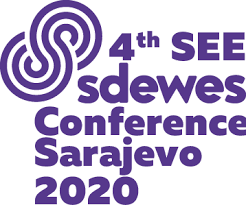 |
Ahmetović, E.,
Ibrić, N., Kravanja, Z., Grossmann, I. E. (2020).
A review of recent developments of water and energy
optimisation methods applied to pulp and paper mills.
The 4th South East European Conference on Sustainable
Development of Energy, Water and Environment Systems (SEE
SDEWES), June 28 - July 2, 2020, Sarajevo, Bosnia and
Herzegovina.
This review presents recent
developments of water and energy optimisation methods
applied to Kraft pulp and paper mills. The Kraft process has
the potential to be adapted to biorefineries for producing
biofuels and other high-value products from wood biomass. It
increases the revenue of the process, reduces fossil fuels
usage and greenhouse gas emissions. The results of several
case studies of the Kraft process are presented to show
typical savings in terms of reduction of water and energy
consumption by applying systematic methods described in this
review. In these case studies, freshwater consumption is
decreased by between 20% and 81% and energy consumption
between 15% and 40%. Recent studies show that research
fields related to water and energy optimisation in pulp and
paper mills and Kraft process-based biorefineries have
attracted attention from researchers in the last several
decades and will continue to be the subject of further
research. KEYWORDS Water and energy, systematic methods,
pulp and paper mill, Kraft process, biorefinery.
Video presentation
of this work is available on my YouTube channel.

|
|
 |
Ibrić, N.,
Ahmetović, E., Kravanja, Z. (2020).
Synthesis of Evaporation Systems for
Utilisation of Waste Streams: A Case Study of Distiller
Waste. The 4th South East European Conference on
Sustainable Development of Energy, Water and Environment
Systems (SEE SDEWES), June 28 - July 2, 2020, Sarajevo,
Bosnia and Herzegovina.
This paper addresses the synthesis of evaporation
systems for concentrating waste streams and obtaining
valuable materials from waste in line with sustainable
development and circular economy concepts. The main focus of
work is on the utilisation of water solution of salts known
as distiller waste in the Solvay process. Distiller waste is
mainly composed of sodium chloride (NaCl), calcium chloride
(CaCl2) and water (H2O). Sodium chloride can be separated
from distiller waste after partial evaporation of water and
recycled as a raw material in the process. The remaining
concentrated water solution of calcium chloride can be sold
on the market or further processed to produce calcium
chloride hydrates and flakes. This work is focused on
exploring heat-integrated evaporation system alternatives
for utilisation of distiller waste to produce a concentrated
water solution of calcium chloride. Also, an extended
concept of our recently developed superstructure and model
is presented to include the fractional crystallisation of
sodium chloride. To address the considered case study, a
thermodynamic model for multicomponent electrolytic systems
including distiller waste is developed as well as a
three-step solution strategy to circumvent a problem with
additional nonlinearities introduced by thermodynamic model
and to solve the overall MINLP model. The optimal design of
heat-integrated evaporator system with mechanical vapour
compression is presented and the main conclusions are
highlighted.
|
|
 |
Ahmetović, E.,
Ibrić, N., Kravanja, Z., Grossmann, I. E., Maréchal, F.,
Čuček, L., Kermani, M. (2018).
Simultaneous optimisation and heat
integration of evaporation systems including mechanical
vapour recompression and background process.
Energy, 158, 1160-1191.
DOI:
https://doi.org/10.1016/j.energy.2018.06.046
This paper proposes a general
superstructure and a Mixed-Integer Nonlinear Programming
(MINLP) model for the synthesis and simultaneous
optimisation and Heat Integration (HI) of Single- and
Multiple-Effect Evaporation (SEE/MEE) systems including
Mechanical Vapour Recompression (MVR) and the background
process. The proposed superstructure also includes different
flow patterns (forward feed, backward feed, parallel feed
and mixed feed), Flashing of Condensates (FCs), single- and
multi-stage MVR systems and various HI opportunities for
preheating of feed stream (e.g. with condensates, bled
vapours, and hot streams from the background process). The
newly proposed SEE/MEE-FC-MVR superstructure is combined
with a Heat Exchanger Network (HEN) superstructure for
performing simultaneous optimisation and HI. On the basis of
this combined superstructure, an MINLP model with tight
bounds on the variables is developed and implemented for its
solution in the General Algebraic Modeling System (GAMS).
The model is solved using a two-step solution strategy. The
proposed model enables to explore simultaneously all
interconnections within the proposed superstructure in order
to find the configuration with the optimal trade-offs
between capital and energy costs as demonstrated in this
paper for different cases of a milk concentration process |
|
 |
This paper is an
extension of our previous study [1] and addresses
simultaneous synthesis of non-isothermal water networks
heat-integrated with hot and cold process streams. Hence,
the scope of heat integration is expanded by enabling heat
integration of process streams such as waste gas streams and
reactor feed and effluent streams simultaneously with the
water network's hot and cold streams. A recently proposed
superstructure [2] for the synthesis of non-isothermal water
networks is extended in order to enable additional heat
integration options with process streams. The model and
solution strategy are modified in order to enable achieving
the solution of the problem within the reasonable
computational time. Pseudo heat exchanger cost was
introduced in order to find heat exchange matches. They are
used as constraints within the mixed-integer nonlinear
programming (MINLP) model that simultaneously addresses the
synthesis problem. The objective function of the proposed
model accounts for operating costs, including fresh water,
utilities and treatment operating cost, and investment costs
of heat exchangers and treatment units. The results indicate
that by solving a unified network, rather than stand-alone
non-isothermal water network and separate process heat
exchange network, additional savings in utilities
consumption and total annualised cost can be achieved.
|
|
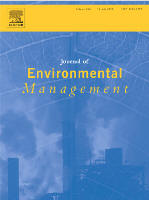 |
Ibrić, N.,
Ahmetović, E., Kravanja, Z., Maréchal, F., & Kermani, M.
(2017).
Synthesis of single and interplant
non-isothermal water networks.
Journal of Environmental Management, 203, 1095-1117.
DOI:
https://doi.org/10.1016/j.jenvman.2017.05.001
This paper addresses the
synthesis problem of non-isothermal water networks using a
mathematical programming approach. A heat-integrated water
network superstructure and its corresponding mixed integer
nonlinear programming (MINLP) model is proposed for the
synthesis of individual as well as interplant water
networks. A new feature of the proposed model includes
piping installation cost within the objective function
minimising the total annual cost of the network. This
introduces additional trade-offs between operating and
investment costs that can impact a final network design.
Three examples were solved in order to demonstrate the
applicability and effectiveness of the proposed model and
solution approach. The results show that additional saving
in total annual cost can be achieved by enabling direct
water integration between plants. Improved solutions were
obtained compared to those reported in the literature
considering freshwater and utilities consumption as well as
total annual cost. |
|


 |
In recent work, a
general superstructure and a Non-Linear Programming (NLP)
model were presented for Multiple-Effect Evaporation Systems
(MEESs). This NLP model was combined with a Heat Exchanger
Network (HEN) model in order to simultaneously perform
optimisation and heat integration of the overall system. The
results of a forward-feed evaporation system integrated with
hot and cold streams of the evaporation system as well as
with the background process were presented. In this paper,
the superstructure is extended by including multi-stage
flash vessels for improving energy efficiency within the
overall system. Additionally, various flow-patterns of
heat-integrated MEES are studied. Also, trade-offs between
energy and investment costs of heat-integrated MEES are
explored for different numbers of evaporation effects in
order to determine the optimum number of effects. The
proposed Mixed-Integer Non-Linear Programming (MINLP) model
of the combined MEES-HEN networks is implemented in a
General Algebraic Modelling System (GAMS) and solved
simultaneously using a two-step solution strategy. In the
first step of the strategy, the NLP model of MEES is solved,
providing an initialisation point for solving the MINLP
model of the combined MEES-HEN network within the second
step. A case study of a milk concentration process is used
to illustrate the method. The results show that the forward
feed flow-pattern with three evaporation effects is totally
integrated with hot and cold process streams from the
background process, and the system exhibits the minimum
Total Annualised Cost (TAC).
This paper is presented at the 20th Conference on Process
Integration, Modelling and Optimisation for Energy Saving
and Pollution Reduction (PRES'17). August 21-24, 2017,
Tianjin, China.
|
|
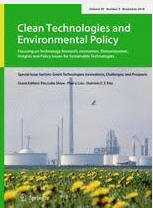 |
The synthesis
problems of non-isothermal water networks, combining heat
exchanger network and water network (WN), usually consist of
a significant number of constraints and variables, namely,
flow rates, contaminant concentrations, temperatures and a
large number of non-linear terms. In most cases, solving
medium and large-scale synthesis problems is computationally
too expensive and challenging. In order to circumvent that
problem, we propose a compact superstructure and
mixed-integer non-linear programming model for the
simultaneous synthesis of non-isothermal WNs. The proposed
superstructure includes heat integration stages enabling
direct and indirect heat exchanges with a manageable number
of hot and cold streams. This reduces the models size
enabling easier solutions of the synthesis problems using
local solvers. In addition, a superstructure reduction
strategy is proposed making the superstructure flexible and
adaptable for different types of problems, namely, pinched
and threshold, and providing additional reduction of
connections within the proposed superstructure. The proposed
model is solved using a two-step solution strategy including
initialisation and design steps. The model is applied to the
examples of different complexities including single and
multiple contaminant problems, and water-using and
wastewater treatment units. Using the proposed iterative
strategy, the improved locally optimal solutions are
identified for most examples, minimising the total annual
cost of the overall network. |
|
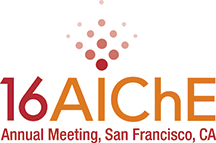 |
Evaporation
processes are used within the process industries in order to
produce concentrated products by evaporating part of water
from different feeds-diluted water solutions. Concentrated
products can represent final products (fruit and vegetable
juices) or intermediate products in cases that crystallized
(salt, sugar) or dried (milk powder) final products should
be produced. Large amounts of steam and cooling water are
consumed in these processes. In order to reduce energy and
water consumption within evaporation processes different
systems can be applied, namely, multiple-effect evaporation,
vapor recompression (thermal and mechanical) or their
combinations. Additionally, these processes can be
integrated with other process subsystems in order to achieve
improved energy and water integration. To address these
issues different computer-aided tools have been proposed.
However, most studies have focused on analysis and
simulation of evaporation processes. Some of the initial
studies [1, 2] considered the synthesis of evaporation
processes in order to develop tools for computing the
minimum utility use for a multiple-effect evaporation
system, which was heat-integrated with process hot and cold
streams. These studies were based on a modified grand
composite curve and heat-path diagram. Also, the focus of
the recent works have been on multiple-effect evaporation
systems [3] and their energy integration with the background
processes in order to minimize the energy consumption within
the overall system [4]. These studies have motivated us to
further expand research in this direction, by applying
mathematical programming approach for the analysis of
existing and the design of new evaporation systems as well
as their heat integration with other process subsystems or
process streams. The main goal of this paper is to develop
models based on mathematical programming that can be applied
for the analysis, synthesis and optimization of
multiple-effect evaporation systems. The proposed models
will be developed in General Algebraic Modeling System
(GAMS). The developed models will enable examination of
different scenarios of multiple-effect evaporation in order
to address the analysis of existing, retrofit and/or design
new evaporation process. Within the proposed framework, a
network consisting of a multiple-effect evaporation system
and heat exchanger network will be investigated in order to
achieve the improved heat integration within the overall
system. Two strategies will be considered to achieve this
task, namely, sequential and simultaneous. The developed
models will be tested on several examples, and also applied
to different feed streams. New results are expected to be
obtained within this field. |
|
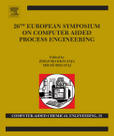
ESCAPE-26
 |
The synthesis of
heat exchanger networks (HENs) has been an active research
field over the last four decades (Klemeš and Kravanja,
2013). Systematic methods based on pinch analysis,
mathematical programming or their combinations have been
successfully applied within this research field in order to
reduce utility consumption and achieve sustainability within
chemical processes. The HEN synthesis problems including
isothermal (Yee and Grossmann, 1990) and non-isothermal
(Björk and Westerlund, 2002) mixing are formulated as
Mixed-Integer Non-Linear Programming (MINLP) models. These
problems are NP hard problems (Furman and Sahinidis, 2001),
and combinatorial complexity, model size, number of
non-convexities and hence, computational burden, increase
dramatically by the number of hot and cold streams and
stages. On the other hand, the computational speeds of
computers and optimisation algorithms have been improved
over the last two decades by several (6-7) orders of
magnitude, which enable the solving of larger problems than
those solved in past as well as solving smaller problems
closer to global optima. This paper firstly presents an
overview of the literature and problems of different
complexities in order to show that over the recent period
the medium and larger HEN synthesis problems have been
successfully solved with local optimisation solvers, and
that the obtained results are closer to their global optima.
Also, a role of our research was to explore the
possibilities of some currently available global and local
optimisation solvers for solving the HEN synthesis problems
of different complexities including isothermal and
non-isothermal mixing. The obtained results of this work are
in good agreements with the literature results, and in some
cases the improved solutions have been identified.
This paper is presented at the 26th European Symposium on
Computer-Aided Process Engineering (ESCAPE 26), Portorož,
Slovenia, June 12-15, 2016.
|
|
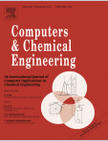 |
Synthesis of
non-isothermal water networks consisting of water-usage,
wastewater treatment, and heat exchanger networks has been
recognised as an active research field in process systems
engineering. However, only brief overviews of this important
field have so far been provided within the literature. This
work presents a systematic and comprehensive review of
papers published over the last two decades and highlights
possible future directions within this field. This review
can be useful for researchers and engineers interested in
water and energy integration within process water networks
using systematic methods based on pinch analysis,
mathematical programming, and their combination. We believe
that this research field will continue to be active in the
near future due to the importance of simultaneous
optimisation of process, water and energy integration for
achieving profitability and sustainability within process
industries.
This paper is the first
comprehensive review paper in the synthesis of
non-isothermal water networks.
|
|
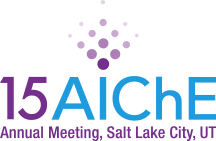 |
Ahmetović, E.,
Kravanja, Z., Maréchal, F., Ibrić, N., Kermani, M. (2015).
Applications of Pinch Analysis and
Mathematical Programming Methods for Synthesizing
Non-Isothermal Water Networks. AIChE 2015 Annual
meeting, November 8-13, 2015, Salt Lake City, Utah, United
States.
Processes industries consume large amounts of
natural resources and generate substantial amounts of
waste/emissions within the environment. Consequently, the
important issues and challenges within the process
industries are the rational usages of raw materials, water
and energy, pollution prevention, minimization of waste
generation, and achieving the profitability and
sustainability of industrial processes [1, 2]. In order to
successfully address these challenges systematic methods
[3], and computer-aided tools can be applied during the
syntheses and operations of industrial processes. Over
recent decades there have been an increasing number of
applications regarding systematic methods based on pinch
analysis and mathematical programming in order to minimize
water/energy usage and wastewater generation within the
manufacturing sector. In early studies these methods were
only applied for heat or water integration. However, over
recent years water and heat integration within process water
networks have been performed simultaneously [4]. This paper
presents recent advancements and applications of pinch
analysis and mathematical programming methods for the
synthesizing of non-isothermal water networks through
illustrative case studies. Case studies of non-isothermal
water networks reported in the literature are of different
complexities, including a network of water-using units, a
network of wastewater treatment units, an integrated network
of process water-using and wastewater treatment units,
single and multiple contaminants, pinched and threshold
problems, etc. [5]. Those problems have been solved using
different synthesis concepts, tools and solution strategies.
The main goal of this paper is to present and discuss the
current state of the art of pinch analysis and mathematical
programming methods for solving the synthesis problems of
non-isothermal water networks of different complexities, and
highlighting the challenges and possible further directions
within this field.
|
|
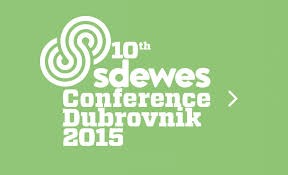 |
Ahmetović, E., Ibrić, N.,
Kravanja, Z., Grossmann, I. E. (2015).
Recent developments in synthesis of
non-isothermal water networks. The 10th
Conference on Sustainable Development of Energy, Water and
Environment Systems (SDEWES), September 27- October 2, 2015,
Dubrovnik, Croatia. SDEWES2015-0731.
Profitable and
sustainable solutions within chemical process industries can
be achieved by minimising freshwater usage, utility
consumption, and wastewater generation within processes.
This research problem, also known as synthesis of
non-isothermal water networks, has received significant
attention throughout academia and industry over the last two
decades. This paper presents recent research progress and
developments in this field, and provides a synthetic and
comprehensive overview of contributions including
peer-reviewed journal and conference papers in which pinch
analysis, mathematical programming or their combinations are
used for solving the synthesis problem of non-isothermal
water networks. In addition, an analysis and statistics of
the published papers is presented, and possible future
directions within this field are highlighted.
|
|
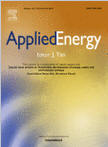 |
This work proposes
a novel general superstructure and a simultaneous
optimisation model for the designing of a heat-integrated
water-using and wastewater treatment network (HIWTN) by
combining a water-using network (WN), a wastewater treatment
network (WTN), and a heat exchanger network (HEN). The
proposed work is an extension of our previous studies that
considered only heat-integrated water networks (HIWNs) or
combined WN and HEN without WTN. The new proposed
superstructure of this work combines water integration
(water-usage, wastewater treatment, and recycling) and heat
integration (direct and indirect heat exchanges) within an
overall network. The simultaneous optimisation model of the
proposed superstructure is formulated as a non-convex mixed
integer non-linear programming (MINLP) problem for
minimising the total annual network cost (TAC). This model
enables appropriate trade-offs between freshwater usage, hot
and cold utilities consumption, and capital cost of heat
exchangers (HEs) and wastewater treatment units (TUs). Three
literature examples are used to test the proposed model. The
improved results of the first two examples are given whilst
for the third modified example a novel network design is
presented in order to include wastewater treatment. |
|
 |
This contribution
presents the synthesis of heat-integrated water-using and
wastewater treatment networks (HIWTNs). The superstructure
proposed includes process water-using units, wastewater
treatment (regeneration) units, and heat exchangers (HEs) as
well as all the new opportunities for water and heat
integration within the overall network. A two-step solution
strategy is proposed for the subsequent solving of two
nonlinear models and the identifying of a set of good
locally optimal solutions. The targeting model is solved
during the first synthesis step thus minimising the
operating cost of the network and providing an
initialisation, as well as good upper-bounds for freshwater
and utilities consumption for the second model. The
objective of the second synthesis step is to synthesise
HIWTNs simultaneously by minimising total annual cost (TAC).
This research was an extension of our previous works and a
follow-up on our recent studies, where we addressed the
synthesis problems of HIWTNs but now using a different
superstructure (e.g. multiple choices mixing and the
splitting of streams allowing for additional heat
integration within the overall network) and a more efficient
solution strategy from the point of generating of multiple
solutions. We solved two literature and two newly introduced
examples in order to demonstrate the applicability of the
proposed strategy. Improvements in the results were achieved
using the studied literature examples of HIWTNs. |
|
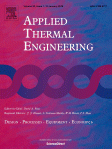 |
This paper
presents an extension of our recent work, in which we
addressed the simultaneous synthesis of heat-integrated
water networks. The novelty and goal of this work is the
development of an extended superstructure and simultaneous
optimization model of heat-integrated water networks now
involving process-to-process streams, and other streams
within the overall network, for heat integration. Those
heat-integration opportunities have not yet been fully taken
into account in most existing models of heat-integrated
water networks. In this study, we presented two strategies
for heat integration of process-to-process streams. The
first one includes the placement of heat exchangers on each
hot and cold process-to-process stream. The second allows
for the cooling and splitting of hot streams, and heating
and splitting of cold streams. This extended model was
formulated as a non-convex mixed-integer non-linear
programming (MINLP) problem. The objective was to minimize
the total annual network cost. Two examples with single and
multiple contaminants are used in order to demonstrate that
involving process-to-process streams for heat integration,
novel and improved solutions can be obtained compared to
those reported in the literature. |
|
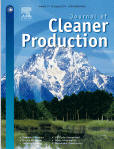 |
Ibrić, N.,
Ahmetović, E., Kravanja, Z. (2014).
Two-Step Mathematical Programming
Synthesis of Pinched and Threshold Heat-Integrated Water
Networks. Journal of
Cleaner Production. 77, 116-139.
DOI:
https://doi.org/10.1016/j.jclepro.2014.01.004
This contribution
describes a novel simultaneous mathematical programming
model for the synthesis of pinched and threshold
heat-integrated water networks (HIWNs). A two-step solution
strategy is proposed consisting of a subsequent solution
using two models. Firstly, the nonlinear programming (NLP)
targeting model is solved by assuming a given value for the
heat recovery approach temperature (HRAT), with the
objective of minimising the operating cost of the network.
This model provides a good initialisation point and rigorous
bounds (freshwater and utilities consumption) for the mixed
integer nonlinear programming (MINLP) model solved during
the second synthesis step. The solution procedure is
repeated for a range of HRAT values providing different
initialisations and constraints identifying a set of good
locally-optimal solutions. In this study we considered and
presented solutions for three types of HIWN problems,
namely, pinched in which both utilities are required,
threshold in which a hot utility is required, and threshold
requiring a cold utility. The obtained results indicate that
the proposed mathematical programming model and the solution
strategy can be successfully applied to the synthesis of
pinched and threshold HIWNs. |
|
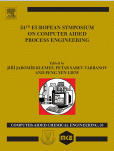
ESCAPE-24
 |
This contribution
describes a general methodology for the synthesis of water
networks of different complexities, ranging from simple
water networks up to combined water, wastewater treatment
and heat exchanger networks. The overall network model is
formulated as a mixed-integer nonlinear programming (MINLP)
problem. The methodology is illustrated and implemented on a
case study. In the first step we present a base case of
water network design without water reuse and determine
freshwater consumption. Then an optimal water network design
with the minimum freshwater usage and wastewater generation
is synthesized. In the next step, an integrated water-using
and wastewater treatment network is synthesized. Finally,
the water and wastewater networks are combined with the heat
exchanger network (HEN), and solved simultaneously. The
obtained results show that the methodology can be used both
for the synthesis of isothermal and non-isothermal water and
wastewater networks.
This work is presented at the
24th European Symposium on Computer Aided Process
Engineering (ESCAPE 24), June 15-18, 2014, Budapest,
Hungary.
|
|


 |
The syntheses of
water network systems are usually performed by minimizing
the total annual cost. In this contribution, Mixed Integer
Nonlinear Programming (MINLP) syntheses of water networks
are performed by using various economic objectives, in order
to investigate their effects on the str uctural,
environmental, and economic characteristics of optimal water
networks. Batch-semicontinuous and isothermal continuous
water networks were analyzed during this study. Significant
differences between optimal networks were obtained when
using different economic objectives. Minimization of
freshwater costs produced highly integrated designs with
high level s of water reuse, regeneration reuse or
recycling, but low profitability. In contrast, maximization
of the internal rate of return resulted in highly profitable
designs with low investment and a low level of water
integration. Either minimization of the total annual cost,
maximization of the net present value, or maximization of
the annual profit produced designs with intermediate or high
levels of integration between water using operations, and
modest profitability. These criteria produced compromise
solutions with proper trade-offs between the profitabilities
and sustainabilities of water network designs.
This work is presented as a Keynote lecture at the 17th
Conference on Process Integration, Modelling and
Optimisation for Energy Saving and Pollution Reduction
(PRES), August 23-27, 2014, Prague, Czech Republic.
|
|
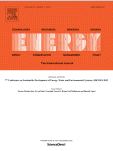
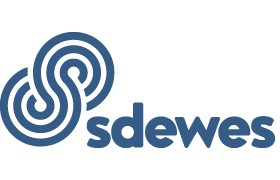 |
This paper
presents a novel superstructure and optimization model for
the simultaneous synthesis of process water and heat
exchanger networks. This superstructure combines the water
network and heat exchanger network using interconnecting hot
and cold streams. The water network has been extended for
both direct and indirect heat exchanges. In addition,
opportunities for heat integration between hot and cold
streams, splitting and mixing of the freshwater and
wastewater streams are incorporated within the
superstructure. The proposed model is formulated as a
non-convex MINLP (mixed-integer non-linear program), where
the objective is to minimize the total annual costs of the
network. A new convex hull formulation is presented for
identifying the streams' roles within the network. Three
examples involving single and multiple contaminant problems
are presented in order to illustrate the applicability and
capabilities of the proposed superstructure and model. In
all cases the resultant networks exhibit lower total annual
costs, whilst the freshwater and utilities consumption are
the same as reported in the literature. In addition, novel
designs for heat-integrated process water networks with
smaller or same number of heat exchangers are presented.
This paper is presented at
the 7th Conference on Sustainable Development of Energy,
Water and Environment Systems (SDEWES), July 1-6, 2012,
Ohrid, Macedonia. SDWS2012.0378, 1-14.
We got the
Best Paper Award
at this conference. |
|


 |
This contribution
describes a new two-step solution strategy for the synthesis
of heat-integrated process water networks (HIPWNs). The
proposed strategy involves the solutions of two models. The
first, nonlinear programming (NLP) model consists of a water
network (WN) model and a simultaneous optimisation and heat
integration model. The objective function in model minimises
the consumption of freshwater, heating and cooling
utilities. The second, a mixed-integer nonlinear programming
(MINLP) model combines the WN model from the first step
using a heat exchanger network (HEN) synthesis (Yee et al.,
1990) model for minimising the total annual cost (TAC) of
the overall combined network. According to the proposed
strategy, the first targeting NLP is solved during the first
step in order to provide good initialisation for the second
step, as well as to determine upper bounds for water and
utility consumption, assuming a given value for the heat
recovery approach temperature (HRAT). Optimal overall
network structures are then obtained during the second
synthesis step by solving the MINLP model, now having all
the temperature driving forces in HEN as optimisation
variables. The two-step procedure is repeated for a range of
HRAT values. A set of good locally-optimal solutions is thus
identified and the best one with minimum TAC is chosen from
amongst them. The solutions obtained indicate that the
proposed strategy can be successfully applied to the
synthesis of HIPWNs. The results of the threshold
case-studies are similar to those found in the literature.
However, better solutions were achieved in pinched cases
because the proposed synthesis model enables the obtaining
of appropriate trade-offs between freshwater, utility
consumption and investment.
This work is presented at
the 16th Conference on Process Integration, Modelling and
Optimisation for Energy Saving and Pollution Reduction
(PRES), September 29-October 2, 2013, Rhodes, Greece. |
|
 |
This work presents
a formalized methodology for salt's separation from three
component electrolytic systems. The methodology is based on
the multi-variant modelling block of a generalized
crystallization process, with options for simulating the
boundary conditions of feasible equilibrium processes and
the elements of crystallization techniques. The following
techniques are considered: cooling crystallization,
adiabatic evaporative-cooling crystallization, salt-out
crystallization, isothermal crystallization, and a
combination of the mentioned techniques. The multi-variant
options of the crystallization module are based on different
variable sets with assigned values for solving mathematical
models of generalized crystallization processes. The first
level of the methodology begins with the determination of
salt crystallization paths from a hypothetical electrolytic
AX-BX-H2O system, following by an examination of
salt-cooling crystallization possibilities. The second level
determines feasible processes by the communication of a
feed-system with the environment through a stream of
evaporated water, or introduced water with introduced
crystallized BX salt. The third level determines the value
intervals of the variables for feasible processes. The
methodological logic and possibilities for the created
process simulator are demonstrated on examples of sodium
sulphate separation from the NaCl-Na2SO4-H2O system, using
different salt concentrations within the feed system. |
|
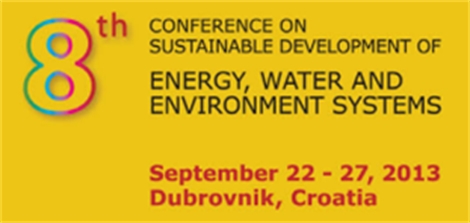 |
Ahmetović, E.,
Kravanja, Z., Ibrić, N. (2013).
Application of Simultaneous
Optimization Model for the Synthesis of Pinch
Heat-Integrated Water Networks.
The 8th Conference on Sustainable Development of Energy,
Water and Environment Systems (SDEWES), September 22-27,
2013, Dubrovnik, Croatia. SDEWES2013.0853, 1-12.
This contribution presents the application of a simultaneous
optimization model for the synthesis of pinched
heat-integrated water networks. The vast majority of
literature case- studies have focused on threshold
heat-integrated water network problems where either the
external hot or cold utility is required for the overall
network operation. However, heat- integrated water networks
can be pinched, which requires both hot and cold external
utilities. Our recently developed superstructure and
simultaneous optimization model, so far applied only to
threshold problems, has successfully addressed the synthesis
of pinched heat- integrated water networks, as shown in this
study. In addition, this work proposes an extension of the
recent superstructure and model in order to allow for both
freshwater and wastewater heating and cooling, thus
introducing additional heat integration opportunities within
the overall network. This extended model and its original do
not rely on the assumption of a fixed heat recovery approach
temperature, as all the temperature-driving forces are now
considered as optimization variables. In this work, a
multi-contaminant pinched problem is studied in order to
clearly show that the proposed models allow for significant
reductions in energy consumption as well as investment costs
for heat exchangers, when compared to existing models.
Appropriate trade-offs between utility consumption, water
usage, and investment can be obtained as the heat
integration in this work is performed simultaneously. In
addition, the resulting overall networks are simpler and
exhibit reduced total annual cost.
This work is presented as a
Keynote lecture
at the 8th Conference on Sustainable Development of Energy,
Water and Environment Systems (SDEWES), September 22-27,
2013, Dubrovnik, Croatia. |
|
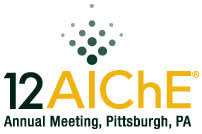 |
In a recent paper
by Ahmetović and Kravanja (2012), a novel superstructure and
mixed-integer non-linear programming (MINLP) model was
proposed for the simultaneous synthesis of process-water and
heat exchanger networks. This superstructure combines the
water network (WN) given by Ahmetović and Grossmann (2011)
and the heat exchanger network (HEN) introduced by Yee et
al. (1990). It includes both direct and indirect heat
exchanges (isothermal and non-isothermal heat transfers)
between hot and cold streams, as well as some additional
opportunities for the splitting and mixing of freshwater and
wastewater streams. This model's objective is to minimize
the total annual costs of the overall network. This
contribution describes and discusses the usage of the
simultaneous optimization model proposed by Ahmetović and
Kravanja (2012) for studying its effects, during different
stages of superstructure development, on the efficiencies
and designs of heat-integrated process-water networks. We
first present a base case-study of a water network synthesis
problem and reports its freshwater and utilities'
consumption. Then, different designs of heat-integrated
process-water networks are synthesized and compared from the
viewpoint of freshwater and utility consumption, total
amount of indirect heat exchanged, and the total eat
exchanger area, as well as the total annual cost. In
addition, the complexities of the resulting different
network designs are also discussed. Using the
above-mentioned synthesis methodology, some novel
water-network designs have been reproduced for certain
literature case-studies with minimum total annual cost
significantly better than that reported in the literature.
We used different GAMS (2012) MINLP solvers (i.e. BARON,
SBB, DICOPT) for model-solving during various stages of the
superstructure's development. It is worth pointing out that
only small-size MINLP problems regarding heat-integrated
water-networks could be solved with global optimality. In
other cases we used local solvers SBB and DICOPT to solve
problems over reasonable computational times, and compared
the obtained results. The results clearly indicated that,
after allowing for additional degrees of freedom for heat
transfer, and water-splitting and mixing within the network,
better network designs with reduced total annual cost
resulted, in comparison with those reported results in the
literature. |
|


 |
This contribution
describes the use of sequential and simultaneous strategies
for the synthesis of heat- integrated process water networks
(HIPWNs). The former strategy consists of the water network
(WN) model by Ahmetović and Grossmann (2011), which
determines the minimum freshwater consumption and the
stage-wise model by Yee et al. (1990) for the synthesis of a
heat exchanger network (HEN), both of which are performed
sequentially. In the recently introduced approach by
Ahmetović and Kravanja (2012) both networks are solved
simultaneously by applying a combined (WN-HEN) model. This
combined model is formulated as a non-convex mixed integer
nonlinear programming (MINLP) problem with the objective
function defined as the total annual cost (TAC). As, on the
one hand, the combined model in this simultaneous approach
enables the obtaining of appropriate trade-offs between
freshwater, utilities, and investment, it is, on the other
hand, very difficult to solve, due to its non-convex and
nonlinear nature. The synthesis of HIPWNs thus still remains
a big challenge. The development of efficient solution
strategies is necessary in order to accomplish this task. In
this paper, syntheses of HIPWNs are carried out using the
above-mentioned strategies. It is worth pointing out, that
in the simultaneous approach the problem can be solved
directly as one system or the WN solved first to provide a
good initial point followed by the overall heat-integrated
process water network (HIPWN) problem after. The proposed
strategies were tested on a literature Case-Study. The
solutions were obtained with the minimum consumption of
freshwater and utilities, and TAC was significantly
improved, when compared to those reported in the literature.
The solutions obtained clearly indicate that the proposed
strategies can be successfully applied for the synthesis of
HIPWNs.
This work is presented as a
Keynote lecture
at the 15th Conference on Process Integration, Modelling and
Optimisation for Energy Saving and Pollution Reduction,
August 25-29, 2012, Prague, Czech Republic. |
|
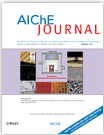 |
Ahmetović, E.,
Grossmann, I. E. (2011).
Global superstructure optimization for
the design of integrated process water networks.
AIChE Journal, 57 (2), 434-457.
DOI:
https://doi.org/10.1002/aic.12276
We propose a general
superstructure and a model for the global optimization for
integrated process water networks. The superstructure
consists of multiple sources of water, water‐using
processes, wastewater treatment, and pre_treatment
operations. Unique features are that all feasible
interconnections are considered between them and multiple
sources of water can be used. The proposed model is
formulated as a nonlinear programing (NLP) and as a mixed
integer nonlinear programing (MINLP) problem for the case
when 0-1 variables are included for the cost of piping and
to establish optimal trade-offs between cost and network
complexity. To effectively solve the NLP and MINLP models to
global optimality we propose tight bounds on the variables,
which are expressed as general equations. We also
incorporate the cut proposed by Karuppiah and Grossmann to
significantly improve the strength of the lower bound for
the global optimum. The proposed model is tested on several
examples. |
|
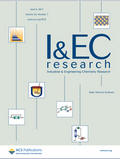 |
Martin M.,
Ahmetović, E., Grossmann, I. E. (2011).
Optimization of Water Consumption in
Second Generation Bioethanol Plants.
Industrial & Engineering Chemistry Research, 50 (7),
3705-3721.
DOI:
https://doi.org/10.1021/ie101175p
In this work we address
the water consumption optimization of second generation
bioethanol production plants from lignocellulosic
switchgrass when using thermo-chemical, thermo-biochemical,
or biochemical routes considering corn-based ethanol as a
reference. To optimize the water consumption a three stage
method is used. First, energy consumption is optimized in
the production processes, which reduces the cooling needs of
the processes and thus, the water losses by evaporation and
drift in the cooling tower. Next, a number of technologies
are considered to partially substitute the use of water as
cooling agent. Finally, the optimal water networks for each
of the ethanol production processes are designed by
determining water consumption, reuse, and recycle and the
required treatment using a superstructure optimization
approach. The resulting water consumption ratios range from
1.5 to 3 gal/gal, which are in the range or even below the
amount of water needed for gasoline production and with low
or no water discharge depending on the process. Further
reduction can be obtained by using air cooling and if the
water released from the crop can be properly recovered and
treated. Under these conditions the water consumption ratios
range from 0.4 to 1.7 gal/gal and with no or low water
discharge. |
|
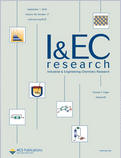 |
Ahmetović, E.,
Martin, M., Grossmann, I. E. (2010).
Optimization of energy and water
consumption in corn-based ethanol plants.
Industrial & Engineering Chemistry Research, 49 (17),
7972-7982.
DOI:
https://doi.org/10.1021/ie1000955
In this paper we study
the simultaneous energy and water consumption in the
conceptual design of corn-based ethanol plants. A major goal
is to reduce the freshwater consumption and wastewater
discharge. We consider the corn-based ethanol plant reported
in Karuppiah, et al. AICHE J. 2008, 54, 1499−1525. We review
the major alternatives in the optimization of energy
consumption and its impact in water consumption. Next, for
each of the alternatives we synthesize an integrated process
water network. This requires closing the loops for process
and cooling water and steam, and implementing the proper
treatment for the water streams. We show that minimizing
energy consumption leads to process water networks with
minimum water consumption. As a result, freshwater use is
reduced to 1.54 galwater/galethanol, revealing that it is
potentially possible to achieve levels of freshwater
consumption that are significantly lower than the ones in
current industrial operation and that wastewater discharged
can also be reduced. |
|
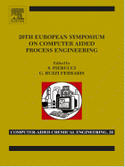
ESCAPE-24
 |
In this paper, we
propose special strategies for obtaining the global or near
global optimum solution from a general superstructure
proposed recently by the authors for the design of
integrated process water networks. The proposed model of the
integrated water network is formulated as a Nonlinear
Programming (NLP) and as a Mixed Integer Nonlinear
Programming (MINLP) problem for the case when 0-1 variables
are included to model the cost of piping and/or selection of
technologies for treatment. The MINLP model can be used to
find optimal network designs with different number of
streams in the piping network. The proposed strategies rely
on bounds on the variables that are derived as general
equations obtained by physical inspection and using logic
specifications needed for solving the model. The cut
proposed in [1] and some variations of it are also used to
significantly improve the strength of the lower bound for
the global optimum. It is shown that the proposed strategies
can effectively solve large-scale problems, and in most
cases, to global optimality. Furthermore, the proposed
strategies allow to readily obtain networks of varying
degrees of complexity by limiting the number of piping
connections
This work is presented at the
European Symposium on Computer Aided Process Engineering
(ESCAPE-20), June 6-9 , 2010, Ischia, Naples, Italy.
|
|
 |
Citiranje mojih radova/istraživačkih rezultata širom svijeta |
|
|
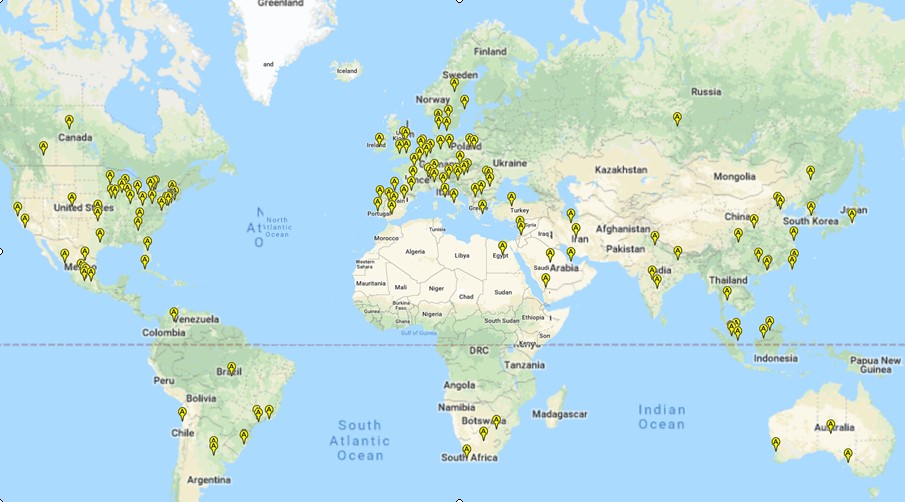 |
|
 |
Radno iskustvo, edukacija, istraživanje, mobilnosti,
treninzi, predavanja |
|
2024 |
Mobility within bilateral
project of scientific and technological cooperation between
Bosnia and Herzegovina and Republic of Slovenia, University
of Maribor, Faculty of Chemistry and Chemical Engineering,
Smetanova 17, 20000 Maribor, Slovenia, July 9-11, 2024.
|
|
2024 |
Mobility within
COST Action CA20138: Network on Water-Energy-Food Nexus for
a Low-Carbon Economy in Europe and Beyond (NEXUSNET), GHAJN
– National Water Conservation Awareness Centre, Rabat,
Malta, May 13-14, 2024.
|
|
2023 |
|
|
2023 |
Participation in
Special Session: Artificial Intelligence in Education
and Research, 8th International Scientific Conference
"Economy Integration" - ICEI 2023, University of Tuzla,
Faculty of Economics, Tuzla, Bosnia and Herzegovina,
December 7-8, 2023.
|
|
2023 |
|
|
2023 |
Mobility within the Erasmus+ K2
project entitled “INTERnationalization at Home:
Embedding Approaches and Structures to Foster
Internationalization at Western Balkans/INTERBA, Universum
International College, Street Hasan Prishtina 1,1, Konjuh,
Lipjan, 14000, Kosovo, November 05-08, 2023.
|
|
2023 |
Participation in scientific
symposium “Days of Diaspora and (Scientific) Partners
(of Montenegro)” held at the University of Montenegro in
Podgorica, October 17-20, 2023.
|
|
2023 |
Mobility within the Erasmus+ K2
project entitled “INTERnationalization at Home:
Embedding Approaches and Structures to Foster
Internationalization at Western Balkans/INTERBA, University
of Tirana, Faculty of Economy, Rruga “ArbenBroci” Tirana
1000, Albanija, October 11-13, 2023.
|
|
2023 |
Mobility within COST Action
CA20138: Network on Water-Energy-Food Nexus for a
Low-Carbon Economy in Europe and Beyond (NEXUSNET), Faculty
of Economy, University of Split, Cvite Fiskovića 21000
Split, Croatia, September 27-30, 2023.
|
|
2023 |
Mobility within the Erasmus+ K2
project entitled “INTERnationalization at Home:
Embedding Approaches and Structures to Foster
Internationalization at Western Balkans/INTERBA, Middlesex
University, The Burroughs, London NW4 4BT, United Kingdom,
September 16-21, 2023.
|
|
2023 |
Participation in the conference
“13th International Conference on Compressors and
Their Systems” and other activities at the City, University
of London i meeting in the Embassy of Bosnia and Herzegovina
in London, September 8-15, 2023.
|
|
|
Mobility within the Erasmus+ K2
project entitled “INTERnationalization at Home:
Embedding Approaches and Structures to Foster
Internationalization at Western Balkans/INTERBA, The
University of Hamburg, Mittelweg 177, 20148 Hamburg,
Germany, May 30-June 02, 2023.
|
|
2022 |
Re-Training within the
Erasmus+ Project INTERBA at the University of Tuzla
Hybrid Re-Training
Workshop, the INTERBA Laboratory - Computer Center, 2nd
floor, Faculty of Technology, University of Tuzla, Urfeta
Vejzagića 8, 75000 Tuzla, Bosnia and Herzegovina, and Zoom
application.

|
|
2022 |
CONNECT2022
Neum, Bosnia and Herzegovina, August 28-September 3, 2022 ▪
Invited lecture: Tips for writing project proposals ▪ Mentoring
a group of students from different universities on topic
"How to write project proposals".
|
|
|
Mobility within
the Erasmus+ K2 project entitled "INTERnationalization at
Home: Embedding Approaches and Structures to Foster
Internationalization at Western Balkans/INTERBA"
University of Cagliari,
Faculty of Engineering and Architecture, Via Universita, 40,
09124 Cagliari CA, Italy
University of Palermo, Piazza Marina, 61, 90133 Palermo PA,
Italy BB Hotel Quattro Canti Palermo, Via Vittorio Emanuele,
291, 90133 Palermo
University of Tirana, Faculty of Economy, Rruga
"ArbenBroci" Tirana 1000, Albanija
▪ Work meetings of management team of the Erasmus+ K2
project INTERBA and realization of project activities ▪
Delivered the first pilot training in which the SCATE
(S-Scope, C-Content, A-Activity, T-Think, E-Extra)
pedagogical model developed by Middlesex University (United
Kingdom) is applied to the preparation of the course
entitled "Combined Water and Energy Integration in the
Process Industries". The powerpoint presentation of the
delivered pilot course for training is available
here.
|
|
|
CONNECT2021
Neum, Bosnia and Herzegovina, August 9-13, 2021 ▪
Invited lecture: How to write the best project proposal and
get funds ▪ Mentoring
a group of students from different universities on topic
"How to write project proposals".
Video presentation of the invited
lecture is available on
my YouTube channel.

|
|
|
Mobility within bilateral
project of scientific and technological cooperation between
Bosnia and Herzegovina and Republic of Slovenia
University of Maribor, Faculty of
Chemistry and Chemical Engineering, Smetanova 17, 20000
Maribor, Slovenia ▪
Mobility within the bilateral research project entitled
"Synthesis of Evaporation Systems using Mathematical
programming". Attending work meetings and dissemination of
research results.
|
|
|
Erasmus+ staff mobility for
teaching
Pamukkale University, Faculty
of Engineering, Department of Chemical Engineering,
Çamlaraltı Mahallesi, Üniversite Cd. No:11, 20160
Pamukkale/Denizli, Turkey ▪ Teaching activities (lectures)
on the topic Energy Efficiency of Chemical Processes;
Attending work meetings; Presentation of the University of
Tuzla
|
|
|
CONNECT2020
Neum, Bosnia and Herzegovina, August 22-29, 2020 ▪
Invited lecture: Writing project proposals ▪ Mentoring
a group of students from different universities on topic
"How to write project proposals".
Video presentation of the invited
lecture is available on my YouTube channel.
 |
|
|
COST Action:
CA18224 - Green Chemical Engineering Network towards
upscaling sustainable processes
Santiago de Compostela, Spain ▪ Participation and active
discussion in WG meetings. Presentation of research work
entitled: Synthesis, Optimisation and Integration of
Sustainable Process Systems |
|
|
Erasmus+
Contact Seminar with the Western Balkans
Tirana International Hotel, Albania ▪ Participation at
Erasmus+ contact seminar, trainings and workshops, and
presentation of the University of Tuzla. |
|
|
Mobility within bilateral project between Slovenia and Bosna
and Herzegovina
University of Maribor, Faculty of Chemistry and Chemical
Engineering, Smetanova 17, SI-2000 Maribor, Slovenia. ▪
Mobility within the bilateral research project entitled
"Synthesis of Evaporation Systems using Mathematical
programming". Attending work meetings and dissemination of
research results. Host research contact: Prof. Zdravko
Kravanja. |
|
|
COST Action:
CA18224 - Green Chemical Engineering Network towards
upscaling sustainable processes
COST Association, 149 Avenue Louise, 15th Floor, Brussels,
Belgium ▪ Participation and active discussion at the first
Management Committee meeting. |
|
|
Mobility within
the DAAD Scholarship Program, Research Stays for University
Academics and Scientists
University of Bremen, Process Systems Engineering, Leobener
Str. 6, 28359 Bremen, Germany ▪ Research related to Process
systems engineering, energy efficiency and sustainable
development. Host contact: Prof. dr. ir. Edwin Zondervan,
Chair Laboratory of Process Systems Engineering. |
|
|
Mobility within
the Erasmus+ programme
University of Granada, Complejo Administrativo Triunfo,
Avda. Del Hospicio s/n, 18071 Granada. ▪ Participation at
the 15th Staff Training Week organized by the University of
Granada within the framework of the Erasmus+ programme and
exchange of mutual experience and best practice procedures.
Host contact: Mercedes Lopez Roldan, Director of the
International Office.
|
|
|
Teaching
mobility within the CEEPUS project
University Sts. Cyril and Methodius, Faculty of Technology
and Metalurgy, Skopje, Chemical Engineering and Technology,
Ruger Boskovic 16, 1000 Skopje ▪ Realisation of the
activities within the CEEPUS project "CIII-SI-0708-06-1819 -
Chemistry and Chemical Engineering"; Guest lecture entitled
Synthesis, Optimisation and Heat Integration of Evaporation
Systems; Work meetings with host local CEEPUS coordinator
and Vice Dean for science and international collaboration.
Host CEEPUS contact: Prof. dr. Vesna Rafajlovska. |
|
|
Training within
Train+ (Training and Research for Academic Newcomers)
project
University of Sarajevo, Center for
Interdisciplinary Studies, Zmaja od Bosne 8, 71000 Sarajevo.
▪ Participation in training within Train+ (Training and
Research for Academic Newcomers) project. Module: Research
Methodology, Scientific Writing and Result Presentation. |
|
|
Teaching
mobility and short excursion within the CEEPUS project
University of Zagreb, Faculty of Chemical Engineering
and Technology, Marulićev trg 19, Zagreb, Croatia. ▪
Realisation of the activities within the CEEPUS project
"CIII-SI-0708-06-1819 - Chemistry and Chemical Engineering".
Guest lecture related to Synthesis of evaporation systems
using mathematical programming; Organizing short mobility
excursion for ten undergraduate students and supervision of
students' seminar works presented at host institution. Host
CEEPUS contact: Prof. dr. Zvjezdana Findrik Blažević. |
|
|
Work meetings
Scientific & Technological Cooperation between Austria and
Bosnia Herzegovina
Project: Modeling and Simulation of
Biorefinery Concepts in the Context of Water and Heat
Integration Graz University of Technology, Institute of
Process and Particle Engineering, Inffeldgasse 13/III, 8010
Graz, Austria ▪ Overview/Review of previous research
projects; Attending work meetings and participation in
discussions. Host contact: Prof. dr. Stefan Radl. |
|
|
Erasmus+ staff
mobility for teaching and participation at the 9th
International Week Programme
Pamukkale University, Faculty of Engineering, Department of
Chemical Engineering, Çamlaraltı Mahallesi, Üniversite Cd.
No:11, 20160 Pamukkale/Denizli, Turkey ▪ Teaching activities
(lectures) on the topic Simulation, optimisation and heat
integration of single and multiple-effect evaporation
plants; Attending the 9th International week programme and
participation in discussions; Presentation of the University
of Tuzla. |
|
|
Erasmus+ staff
mobility for training and participation at the 2nd Erasmus+
International Credit Mobility Week "Internationalizing
Higher Education Institutions beyond the European borders"
University of Valéncia, Av. de Blasco
Ibáñez, 13, 46010 Valéncia, Spain ▪ Attending the 2nd
Erasmus+ International Credit Mobility Week; Training
activities related to Internationalizing Higher Education
Institutions beyond the European borders; Presentation of
the University of Tuzla and participation in discussions. |
|
|
HEInnovate:
Train the trainers
COOP Hotel, Sofia,
Bulgaria ▪ Training activities related to a framework for
entrepreneurial and innovative higher education
institutions; Participation in workshops and discussions. |
|
|
Erasmus+ staff
mobility for teaching and participation at the 8th
International week
Pamukkale University, Faculty
of Engineering, Department of Chemical Engineering,
Çamlaraltı Mahallesi, Üniversite Cd. No:11, 20160
Pamukkale/Denizli, Turkey ▪ Teaching activities (lectures)
on the topic Process optimisation: Introduction and
applications in chemical engineering; Attending the 8th
International week and participation in discussions. |
|
|
Mobility within
the project "Involvement of visiting foreign experts and
university teachers in the pedagogical process as a pillar
of quality development process of internationalisation of
the University of Maribor"
The project is co-funded by the
European Social Fund and the Ministry of Education, Science
and Sport of the Republic of Slovenia) University of
Maribor, Faculty of Chemistry and Chemical Engineering,
Smetanova 17, SI-2000 Maribor, Slovenia. ▪ Teaching
activities (lectures/exercises) in the topics related to
Process optimisation, modelling and solving chemical
engineering problems in GAMS. |
|
|
Full Professor
in Chemical Engineering
University of
Tuzla, Faculty of Technology, Department of Chemical
Engineering, Univerzitetska 8, 75000 Tuzla, Bosnia and
Herzegovina ▪ Teaching and Research in Chemical Engineering.
Teaching Courses: Unit Operations, Chemical Process Design,
Process Integration, Rational Use of Energy/Energy
Efficiency in Chemical Processes, Synthesis and Optimisation
of Chemical Processes.
|
|
|
Mobility within
the SCOPES (Scientific Co-operation between Eastern Europe
and Switzerland) project
EPFL/Industrial Processes & Energy Systems Engineering Group
(IPESE), Valais Wallis, 1951 Sion, Switzerland. ▪ Mobility
within the SCOPES research project entitled "Computer Aided
Process Engineering applied to energy, water, and waste
reduction during process design and operation". Attending
work meetings and dissemination of research results. Host
research contact: Prof. François Maréchal. |
|
|
Erasmus+ staff
mobility for training/teaching
Lappeenranta University of Technology, School of Business
and Management, Lappeenranta, Finland ▪ Study and attending
work meetings. Host research contact: Prof. Andrzej
Kraslawski. |
|
|
Mobility within
the project "Internationalization - A Pillar of Development
of the University of Maribor"
University of Maribor, Faculty of
Chemistry and Chemical Engineering, Smetanova 17, 2000
Maribor, Slovenia ▪ Teaching and Research in Chemical
Engineering (Process Systems Engineering and Sustainable
Development). Visiting Professor in framework of project
"Internationalization - A Pillar of Development of the
University of Maribor" (co-financed by European Social Fund
and Ministry of Education, Science and Sport of the Republic
of Slovenia). Host contact: Prof. dr. Zdravko Kravanja. |
|
|
Mobility within
the TEMPUS project
University of
Banja Luka, Faculty of Economy, Bosnia and Herzegovina.
Participation at the workshop "HEI Staff trained on internal
QA in PhD" organised within the TEMPUS project "Embedding
Quality Assurance in Doctoral Education (EQUADE). |
|
|
Associate Professor in Chemical
Engineering
University of
Maribor, Faculty of Chemistry and Chemical Engineering,
Smetanova 17, 2000 Maribor, Slovenia. |
|
|
Teaching
mobility within the CEEPUS project
University of Maribor, Faculty of Chemistry and Chemical
Engineering, Smetanova 17, SI-2000 Maribor, Slovenia. ▪
Realisation of the activities within the CEEPUS project
entitled "PhD in Sustainable Chemistry and Chemical
Engineering". Guest lecture related to Synthesis of
heat-integrated process networks and applications of
developed optimization models to problems of different
complexity. Host contact: Prof. dr. Zdravko Kravanja.
|
|
|
EM2-STEM:
Feedback and Employability Workshop - Case Study Mobility
Experience
Lecture: EM2-STEM Mobility Experience
at the Lappeenranta University of Technology. ▪ Presentation
of mobility experience at the EM2-STEM: Feedback and
Employability Workshop held in Novi Sad 14-15, 2013, Serbia.
|
|
|
Postdoctoral
Research in Chemical Engineering - EM2-STEM Program
Lappeenranta University of Technology,
P.O.Box 20, 53851 Lappeenranta, Finland. ▪ The staff member
mobility project related to the chemical engineering
curriculum study, case-base reasoning and water and energy
management in process plants. Host research contact: Prof.
Andrzej Kraslawski.
|
|
|
Associate
Professor in Process Engineering
University of Tuzla, Faculty of Technology, Department of
Process Engineering, Univerzitetska 8, 75000 Tuzla, Bosnia
and Herzegovina ▪ Teaching and Research in Process
Engineering. Teaching Courses: Unit Operations, Chemical
Process Design, Process Integration, Rational Use of Energy.
|
|
|
Postdoctoral
Research in Process Systems Engineering - JoinEU SEE
Mobility Program
University of Maribor, Faculty of
Chemistry and Chemical Engineering, Laboratory for Process
Systems Engineering and Sustainable Development, Smetanova
17, 2000 Maribor, Slovenia. ▪ Postdoctoral research in
Process Systems Engineering within the JoinEU SEE Program
(Scholarship scheme for academic exchange between EU and
Western Balkan countries). Research project: Sustainable
water and energy management in process industry and
Synthesis of heat-integrated process water networks.
Advisor: Prof. Zdravko Kravanja.
|
|
|
Postdoctoral
Research in Process Systems Engineering - DAAD
Program
Institute for Applied Material Flow
Management (IfaS), Environmental Campus Birkenfeld, PO Box
1380, 55761 Birkenfeld, Germany ▪ Postdoctoral research in
Process Systems Engineering within the DAAD Program
(Research Stays for University Academics and Scientists).
Research project: Sustainable water and energy management in
the process industries. Host research contact: Prof. Peter
Heck.
|
|
|
Mobility within
TEMPUS project
Katholieke Hogeschool
Sint-Lieven, Gent, Belgium ▪ Study visit and training within
the TEMPUS project: Creation of university-enterprise
cooperation networks for education on sustainable
technologies. Project ID: 158989-JPHES.
|
|
|
Assistant Professor in Process
Engineering
University of Tuzla, Faculty of Technology, Univerzitetska
8, 75000 Tuzla, Bosnia and Herzegovina ▪ Teaching and
Research in Process Engineering. Teaching Courses: Unit
Operations I and II, Thermal Processes in Process
Engineering, Process Design I, Hydro-mechanical operations,
Heat and Mass Transfer Operations, Rational Use of Energy,
Chemical Process Design, Process Integration. |
|
|
Fulbright
Visiting Scholar Conference
The Ritz-Carlton, 1150 22nd St NW, Washington, DC ▪
Attending plenary panels and sessions related to Access and
Equity in Higher Education; Participations in discussions. |
|
|
Postdoctoral
Research in Process Systems Engineering - Fulbright Visiting
Scholar
Carnegie Mellon University, Center for
Advanced Process Decision-making, Department of Chemical
Engineering, 5000 Forbes Avenue, Pittsburgh, PA 15213-3890
USA. ▪ Postdoctoral research in Process Systems Engineering
within the Fulbright Visiting Scholar Program. Research
Projects: Energy and Water Optimization of Bioprocess
Systems. Advisor: Prof. Ignacio E. Grossmann, Rudolph R. and
Florence Dean University Professor.
|
|
|
Vice Dean for Education
University of Tuzla, Faculty of Technology, Department of
Process Engineering, Univerzitetska 8, 75000 Tuzla, Bosnia
and Herzegovina. ▪ Faculty management activities, work with
the chairs of departments and teaching staff and students in
order to improve education and teaching process at the
Faculty of Technology. |
|
|
Ph.D. in
Process Engineering
University of Tuzla, Faculty of
Technology, Department of Process Engineering,
Univerzitetska 8, 75000 Tuzla, Bosnia and Herzegovina. ▪
Thesis: Process simulation for concentration and
crystallization of food systems by water evaporation.
Department of Process Engineering, Faculty of Technology,
University of Tuzla. |
|
|
Senior Teaching Assistant in
Chemical Engineering
University of Tuzla, Faculty of Technology, Department of
Chemical and Food Engineering, Univerzitetska 8, 75000
Tuzla, Bosnia and Herzegovina. ▪ Teaching and Research in
Chemical Engineering. Teaching Courses: Unit Operations,
Analysis and Simulation of Processes, Rational Use of
Energy.
|
|
|
Mobility within
bilateral project between Slovenia and Bosna and Herzegovina
University of Maribor, Faculty of
Chemistry and Chemical Engineering, Smetanova 17, 2000
Maribor, Slovenia. ▪ Postgraduate research and realization
of the research activities within the bilateral project
between Slovenia and Bosnia and Herzegovina. Project:
Computer Aided Process Optimization. Advisor: Prof. Zdravko
Kravanja.
|
|
|
M.Sc. in
Chemical Engineering
University of Tuzla,
Faculty of Technology, Department of Chemical and Food
Engineering, Univerzitetska 8, 75000 Tuzla, Bosnia and
Herzegovina. A part of research was done at the Faculty of
Chemistry and Chemical Engineering, University of Maribor,
Slovenia. ▪ Thesis: Heat integration and retrofit of heat
exchangers network using mathematical programming. |
|
|
Mobility within
bilateral project between Slovenia and Bosna and Herzegovina
University of Maribor, Faculty of
Chemistry and Chemical Engineering, Smetanova 17, 2000
Maribor, Slovenia. ▪ Postgraduate research and realization
of the research activities within the bilateral project
between Slovenia and Bosnia and Herzegovina. Project:
Computer Aided Process Optimization. Advisor: Prof. Zdravko
Kravanja.
|
|
|
Postgraduate
research in Chemical Engineering
University of Maribor, Faculty of Chemistry and Chemical
Engineering, Smetanova 17, 2000 Maribor, Slovenia. ▪
Postgraduate research and work on master thesis: Heat
integration and retrofit of heat exchanger network using
mathematical programming. Advisor: Prof. Zdravko Kravanja.
|
|
|
Postgraduate
training in Chemical Engineering
Rovira and Virgili University, Tarragona, Department of
Chemical Engineering, Spain ▪ Postgraduate training within
the international collaboration between Spain and Bosnia and
Herzegovina. |
|
|
Postgraduate
research in Chemical Engineering
University of Maribor, Faculty of Chemistry and Chemical
Engineering, Smetanova 17, 2000 Maribor, Slovenia. ▪
Postgraduate research and work on master thesis: Heat
integration and retrofit of heat exchanger network using
mathematical programming. Advisor: Prof. Zdravko Kravanja.
|
|
|
Teaching Assistant in Chemical
Engineering
University of Tuzla, Faculty of Technology, Department of
Chemical Engineering, Univerzitetska 8, 75000 Tuzla, Bosnia
and Herzegovina. ▪ Teaching and Research in Chemical
Engineering. Teaching Courses: Chemical Engineering
Calculations, Unit Operations, Thermodynamics and
Thermotechnics. |
|
|
B.Sc. in
Chemical Engineering
University of Tuzla,
Faculty of Technology, Department of Chemical and Food
Engineering , Univerzitetska 8, 75000 Tuzla, Bosnia and
Herzegovina ▪ Thesis: Mathematical model of reactor balance
equations in maleic-anhydride production. |

|
Odabrana gostujuća i pozvana predavanja, seminari, treninzi,
radionice
|
|
|
Introductory
Lecture:
International cooperation and
opportunities for the development of research in Bosnia and
Herzegovina in the field of chemical engineering,
Academy of Sciences and Arts of Bosnia and Herzegovina,
Sarajevo, Bosnia and Herzegovina, September 19, 2024.
Lecture at
Re-training:
Didactics, curriculum development, and
curriculum planning.
Hybrid
Workshops and Re-Training within the Erasmus+ Project "INTERBA",
Univerzitet u Tuzli, Tehnološki fakultet, Tuzla, Bosna I
Hercegovina, Decembar 28-29, 2022.
Invited Lecture:
International cooperation and
inter-university cooperation - possibilities and
perspectives. Rector's Conference "Higher
Education, Public Universities and Development
Perspectives", University of Sarajevo, Sarajevo, Bosnia and
Herzegovina, December 1, 2022.
Plenary lecture:
Importance of Water and Energy Integration in Circular
Economy Approach. The 5th International Conference on
Technologies & Business Models for Circular Economy,
September 12-14, 2022, Portorož, Slovenia. Plenary Lecture.
Invited Lecture:
Tips for writing project proposals.
Connect2022, Neum, Bosna i
Hercegovina, August 28-Septembar 3, 2022.
Lecture at Training:
Combined Water and Energy Integration in the Process
Industries.
Training
within the Erasmus+ Project "INTERBA", Palermo, Italy, July
18-20, 2022.
Lecture at Training:
Combined Water and Energy Integration
in the Process Industries. Training within the
Erasmus+ Project "INTERBA", Tirana, Albania, April 11-14,
2022.
Invited lecture at
workshop: Presentation of Erasmus+ KA2 project "INTERnationalization
at Home: Embedding Approaches and Structures to Foster
Internationalization at Western BAlkans",
University of Tuzla, Tuzla, Bosnia and Herzegovina, December
10, 2021
Invited lecture at workshop:
Experience from realized
mobilities within Erasmus+ KA1 programme,
University of Tuzla, Tuzla, Bosnia and Herzegovina, December
10, 2021.
Invited lecture:
How to write the best project
proposal and get funds.
Connect2021,
Neum, Bosnia and Herzegovina, August 9-13, 2021
Invited lecture:
Writing project proposals.
Connect2020,
Neum, Bosnia and Herzegovina, August 22-29, 2020
PSE Seminar:
Synthesis, Optimisation and Heat Integration of Evaporation
Systems, July 25, 2019, Bremen, Germany. Seminar given at
the University of Bremen, Laboratory of Process Systems
Engineering.
Training:
HEInnovate Train the Trainers, November 15-16, 2018, Sofia,
Bulgaria. Active participation in training, workshops and
discussions.
Seminar/Workshop:
Application of computer aided process engineering for
reducing water/energy consumption and waste generation in
technological processes.
The 22th Summer
University of Tuzla,
July 4, 2017, Tuzla, Bosnia and Herzegovina. Seminar held
within the SCOPES (Scientific Co-operation between Eastern
Europe and Switzerland) research project.
Plenary lecture:
Water and
heat integration in the process industry, the 5th
Environmental Resources, Sustainable Development and Food
Production (OPORPH), November 16-17, Tuzla, Bosnia and
Herzegovina
CEEPUS Lecture:
Synthesis of Heat-Integrated Water Networks. Faculty of
Chemistry and Chemical Engineering, University of Maribor,
June 2013, Maribor, Slovenia.
Invited Session Lecture:
Sustainable Water, Wastewater, and Energy Management in the
Process Industries. The 10th Conference of Chemists,
Technologists and Environmentalists of RS". November 15 -
16, 2013, Banja Luka, Bosnia and Herzegovina.
Guest Lecture:
Process Integration: Water and Energy Optimization in
Process Industry, Lappeenranta University of Technology,
September 21, 2012, Lappeenranta, Finland.
Invited Lecture:
Water Network Synthesis in Process Industry. IX Meeting of
Young Chemical Engineers, New Technologies & Knowledge
Transfer, University of February 16-17, 2012, Zagreb,
Croatia.
Seminar:
Fulbright Visiting Scholar Program 2008-2009. Seminar
organized on the occasion of the 50th anniversary of the
Faculty of Technology, October 23, 2019, Tuzla, Bosnia and
Herzegovina.
Process Systems Engineering Seminar:
General superstructure and global optimization for the
design of integrated process water networks. August 28,
2009, Carnegie Mellon University, Department of Chemical
Engineering. Pittsburgh, Pennsylvania, United States.
Guest Lecture: Unit operations in food industry.
Thermal properties of food. Heat-exchangers, Evaporation.
May, 2005, Faculty of Agriculture and Food Sciences,
University of Sarajevo, Sarajevo, Bosnia and Herzegovina.
|
|
 |
Nagrade, grantovi i stipendije |
|
|
Federal Science Award for
Technical Science
awarded by the Federal Ministry of Education and Science and
the Government of the Federation of Bosnia and Herzegovina,
2022.
Federal Science Award for the
Popularization and Promotion of Science
awarded by the Federal Ministry of Education and Science and
the Government of the Federation of Bosnia and Herzegovina,
2021.
Erasmus + mobility for teaching, 2018, 2019, 2021
Research grant from the Federal Ministry
of Education and Science Bosnia and Herzegovina for a
research project, 2016-2017.
Erasmus + mobility for
training, 2016.
DAAD Scholarship Programme, Research
Stays for University Academics and Scientists, 2019.
Research grant for the SCOPES (Scientific co-operation
between Eastern Europe and Switzerland) project, 2014-2017.
Best paper award at the 7th Conference on Sustainable
Development of Energy, Water and Environment Systems
(SDEWES), 2012.
EM2-STEM Scholarship, 2012.
JoinEU
SEE Scholarship, 2011/2012
DAAD Scholarship Programme, Research Stays for
University Academics and Scientists, 2011.
Fulbright
Visiting Scholar Program Grant for Postdoctoral Research,
2008/2009
Award of Rector of the University of Tuzla for
excellent work results at the Faculty of Technology, 2007
Award of Cantonal Ministry of Education, Science, Culture
and Sport for PhD study, 2005
Scholarship for
postgraduate training (Collaboration between University of
Rovira and Virgili, Spain, and University of Tuzla, Bosnia
and Herzegovina), 2001
Scholarships for postgraduate
training. Ministry of Science and Technology of Slovenia,
2000/2001
Postgraduate Student Grants (Supported by
Austrian Federal Chancellery), 2000.
|
|
 |
Recenzent za časopise |
|
|
|
|
 |
Recenzent za knjige i poglavlja u knjigama |
|
|
   
|
|
 |
Članstvo |
|
|
Corresponding member of the Academy of
Sciences and Arts of Bosnia and Herzegovina (ANUBiH)
in the Department of Technical Sciences, from December 20,
2022.
Member of the Editorial Board
of the journal Chemistry in Industry, from 2022.
Member of the Editorial Board
of the journal Journal of Sustainable Technologies and
Materials (JST&M) from 2021.
Member of Scientific Advisory Board, the 4th LA Conference
on Sustainable Development of Energy, Water and Environment
Systems (SDEWES), January 14–17, 2024, Vina del Mar, Chile.
Member of the Scientific Committee
of the 7th International Conference on
Technologies & Business Models for Circular Economy,
September 4-6, 2024, Portorož, Slovenia.
Member of the Scientific Committee of the 6th International
Conference on Technologies & Business Models for Circular
Economy, September 6-8, 2023, Portorož, Slovenia.
Member of International Scientific
Committee, the 32nd European Symposium on
Computer-Aided Process Engineering (ESCAPE), June 12-15,
2022, Toulouse, France.
Member of Scientific Advisory Board,
the 3rd Latin American Conference on Sustainable Development
of Energy, Water and Environment Systems (SDEWES), July
24-28, 2022, Sao Paulo, Brazil.
Member of Scientific Advisory Board,
the 5th South East European Conference on Sustainable
development of Energy, Water and Environment Systems (SEE
SDEWES), May 22-26, 2022, Vlore, Albania.
Member of International Scientific
Committee, the 31st European Symposium on
Computer-Aided Process Engineering (ESCAPE), June 6-9, 2021,
Istanbul, Turkey.
Member of Scientific Advisory Board,
the 15th Conference on Sustainable Development of Energy,
Water and Environment Systems (SDEWES), September 1-5, 2020,
Cologne, Germany.
Member of Scientific Advisory Board,
the 4th South East European Conference on Sustainable
development of Energy, Water and Environment Systems (SEE
SDEWES), June 28-July 2, 2020, Sarajevo, Bosnia and
Herzegovina.
Member of Scientific Advisory Board,
the 1st Asia Pacific Conference on Sustainable Development
of Energy, Water and Environment Systems (SDEWES), April
6-9, 2020, Gold Coast, Australia.
Member of Scientific Advisory Board,
the 2nd Latin American Conference on Sustainable Development
of Energy, Water and Environment Systems (SDEWES), February
9-12, 2020, Buenos Aires, Argentina.
Member
of International Scientific Committee,
the 29th European Symposium on Computer-Aided Process
Engineering (ESCAPE), June 16-19, 2016, Eindhoven, the
Netherlands.
Member of the Energy Section-Energy
and Resources Efficiency in the Chemical and Process
Industry,
European
Federation of Chemical Engineering
(EFCE),
from 2019.
Member of Scientific Advisory Board,
the 14th Conference on Sustainable Development of Energy,
Water and Environment Systems (SDEWES), October 1-6, 2019,
Dubrovnik, Croatia.
Member of Scientific Advisory Board,
the 13th Conference on Sustainable Development of Energy,
Water and Environment Systems (SDEWES), September 30-October
4, 2018, Palermo, Italy.
Member of Scientific Advisory Board,
the 1st Latin American Conference on Sustainable Development
of Energy, Water and Environment Systems (SDEWES), January
28-31, 2018, Rio de Janeiro, Brazil.
Member of the Senate of the University
of Tuzla, from 2017.
Member of International Advisory
Committee, the 10th
International Conference on Sustainable Energy &
Environmental Protection (SEEP), Water and Air Quality, June
27-30, 2017, Bled, Slovenia.
Member of International
Advisory Committee, the 25th Croatian Conference of Chemists
and Chemical Engineers with International Participation (25.
HRVATSKI SKUP KEMIČARA I KEMIJSKIH INŽENJERA s međunarodnim
sudjelovanjem), April 19-22, 2017, Poreč, Croatia.
Member of Scientific Advisory Board,
the 12th Conference on Sustainable Development of Energy,
Water and Environment Systems (SDEWES), October 4-8, 2017,
Dubrovnik, Croatia.
Member of Scientific Advisory Board,
the 2nd South East European Conference on Sustainable
development of Energy, Water and Environment Systems (SEE
SDEWES), June 15-18, 2016, Piran, Slovenia.
Member of International Scientific
Committee, the 26th
European Symposium on Computer-Aided Process Engineering
(ESCAPE), June 12-15, 2016, Portorož, Slovenia.
Member of
Steering Committee of University Sport Society, University
of Tuzla, from 2016.
Member of Scientific Advisory Board,
the 10th Conference on Sustainable Development of Energy,
Water and Environment Systems (SDEWES), September 27-October
2, 2015, Dubrovnik, Croatia.
Member of Scientific Advisory Board,
the 9th Conference on Sustainable Development of Energy,
Water and Environment Systems (SDEWES), September 20-27,
2014, Venice-Istanbul, Turkey.
Member of Scientific Advisory Board,
the 1st South East European Conference on Sustainable
development of Energy, Water and Environment Systems (SEE
SDEWES), June 29-July
3, 2014, Ohrid, Republic of Macedonia.
Member of Scientific Advisory Board,
the 8th Conference on Sustainable Development of Energy,
Water and Environment Systems (SDEWES), September 20-27,
2013, Dubrovnik, Croatia.
Member of
Croatian Society of Chemical
Engineering
(HDKI), from 2002.
Senior Member of
American Institute of Chemical Engineers
(AIChE), from 2016.
Member of
American Institute of Chemical Engineers
(AIChE), from 2009. |
|
|
Internacionalizacija i mobilnost
Internacionalizacija, mreže saradnje, zajednički projekti,
studijske posjete i mobilnosti igraju veoma važnu ulogu u
profesionalnom razvoju istraživača i nastavnika i
poboljšanju kvaliteta izvođenja nastave i istraživanja na
univerzitetima. Ohrabrujem sve kolege da apliciraju na
različite programe mobilnosti kako bi stekli nezaboravna i
vrijedna iskustva koja im mogu dati nove smjernice za
budućnost.
U sljedećem radu mogu se naći neki detalji o mom iskustvu
stečenom u okviru Fulbright Scholar Visiting Programa na
Carnegie Mellon University, Department of Chemical
Engineering, Pittsburgh, Pennsylvania:
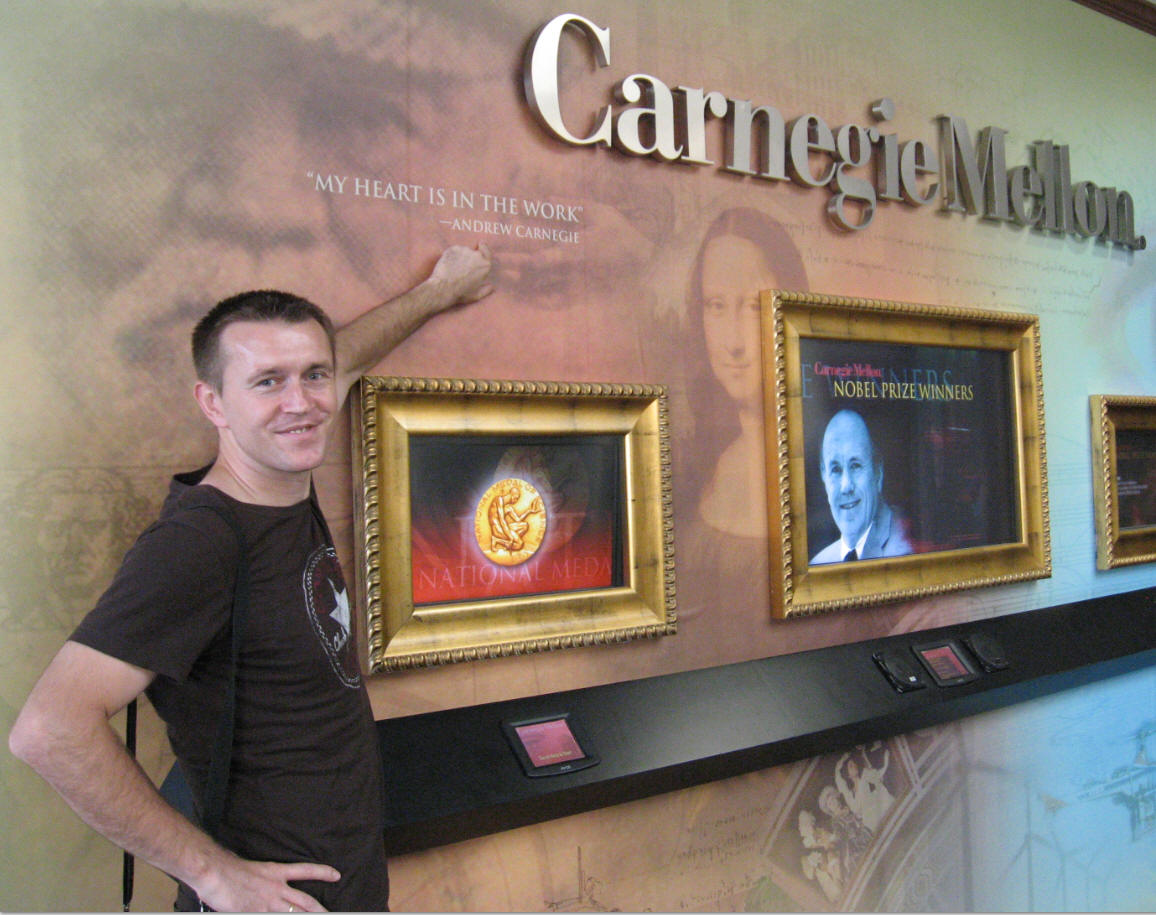 |
|
|
|
|





